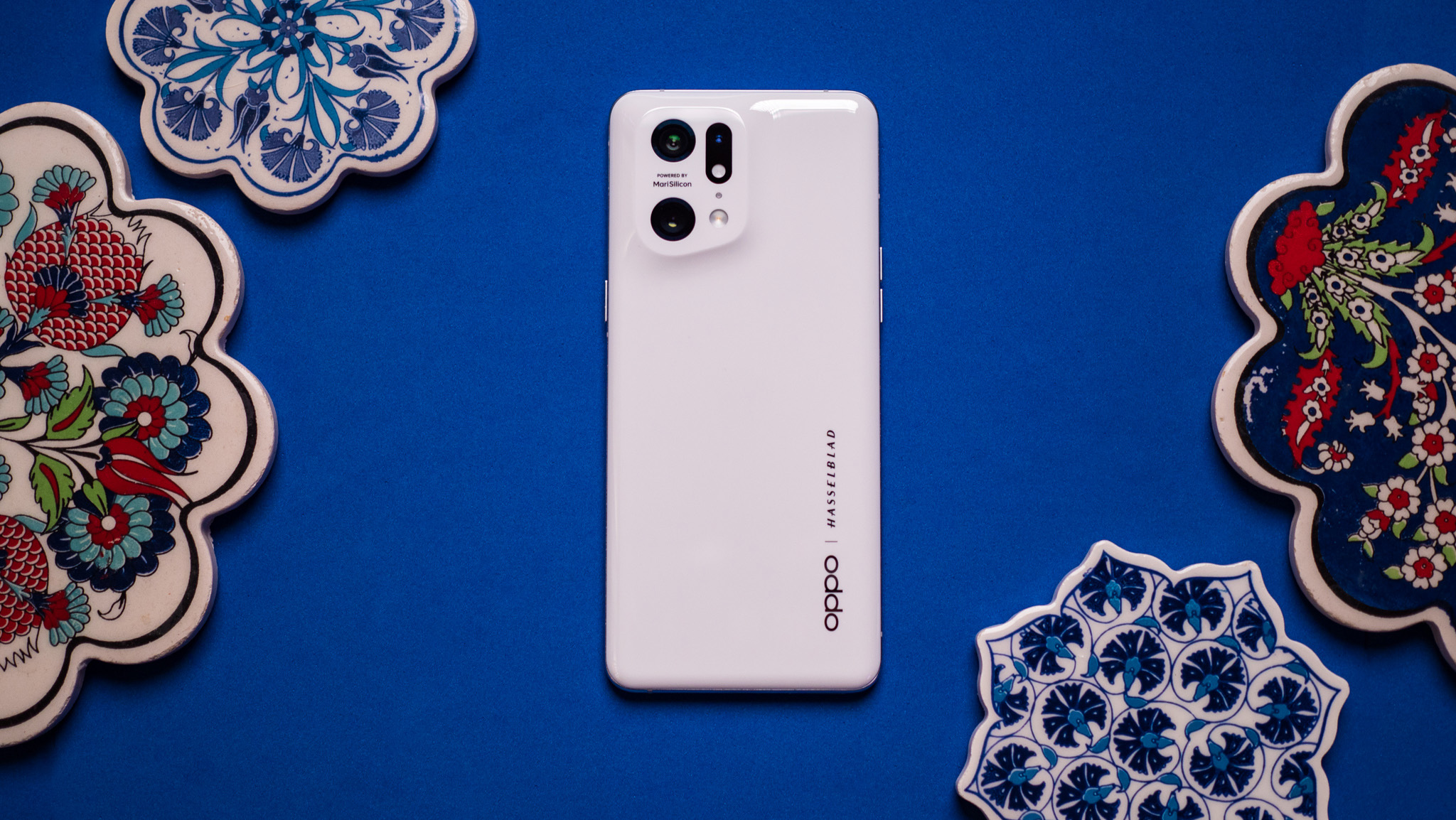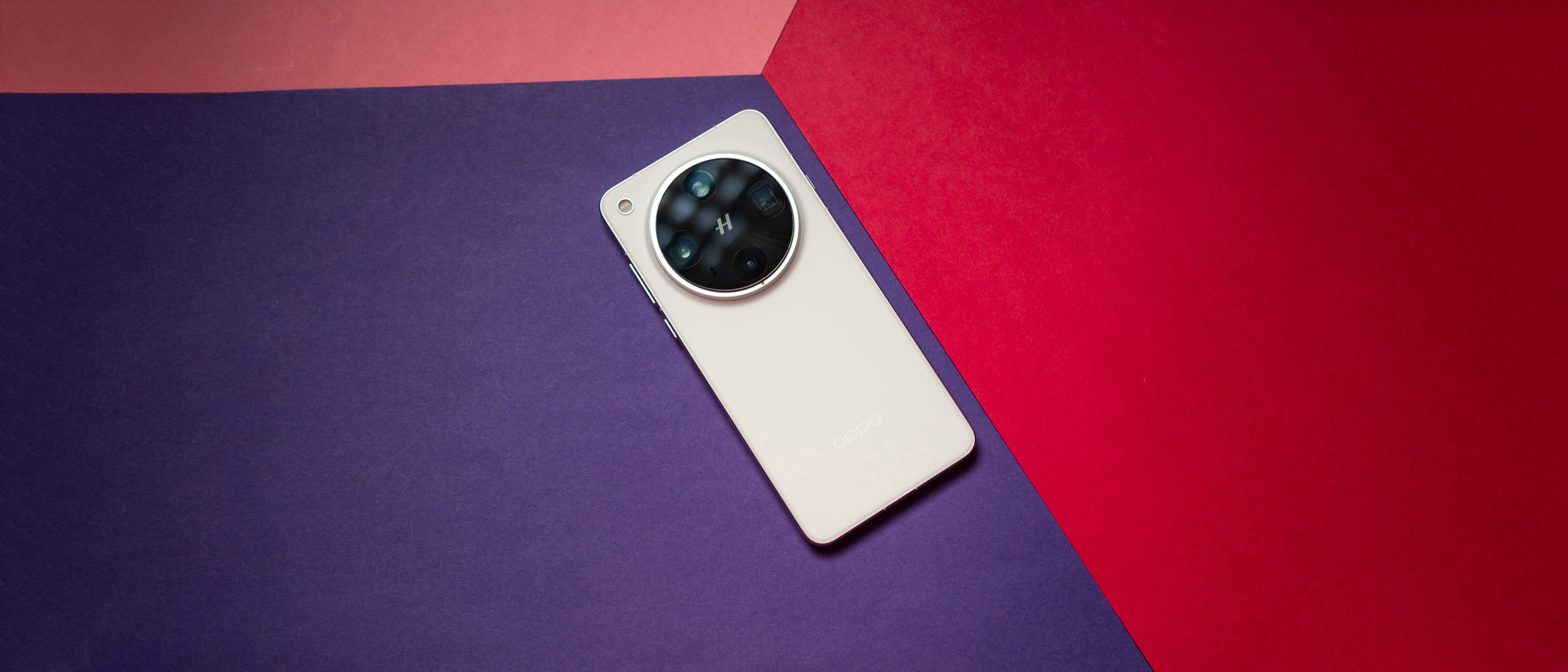Android Central Verdict
The Find X5 Pro delivers one of the best-looking designs of 2022, along with exciting camera upgrades, the latest internal hardware, faster charging tech, and all the extras you need. Combine that with long-term software updates and it's easy to see that the Find X5 Pro is one of the best phones you can buy today.
Pros
- +
Gorgeous ceramic chassis
- +
QHD+ 120Hz AMOLED screen
- +
Latest internal hardware, global 5G
- +
Phenomenal cameras
- +
Custom imaging NPU
- +
80W wired / 50W wireless charging
- +
Android 12 out of the box
- +
Three platform updates
- +
IP68 dust and water resistance
Cons
- -
Costly
- -
Only 2x optical zoom
- -
Inconsistent wide-angle lens
Why you can trust Android Central
We've seen plenty of great phones already in 2022. Samsung launched the first salvo this year, but Chinese manufacturers aren't far behind. I'm very interested in what OPPO is doing this year; the brand witnessed a 50% year-on-year increase in its Find and Reno series over the last 12 months, and is seeing a lot of momentum in key western markets, including the UK.
OPPO is aiming to build on that growth with this year's Find X5 Pro. The phone is now making its way to global markets, and is aimed squarely against the Galaxy S22+. It follows a similar design as last year's Find X3 Pro, but there are a lot of exciting changes under the hood, including OPPO's in-house imaging NPU, the MariSilicon X. There's also a new Hasselblad integration, upgraded internals, and faster charging tech that now goes up to 80W wired and 50W wirelessly.
With the Galaxy S22+ offering a strong overall package, does the Find X5 Pro have what it takes to go up against the best that Samsung has to offer? Let's find out.
OPPO Find X5 Pro: Price and availability
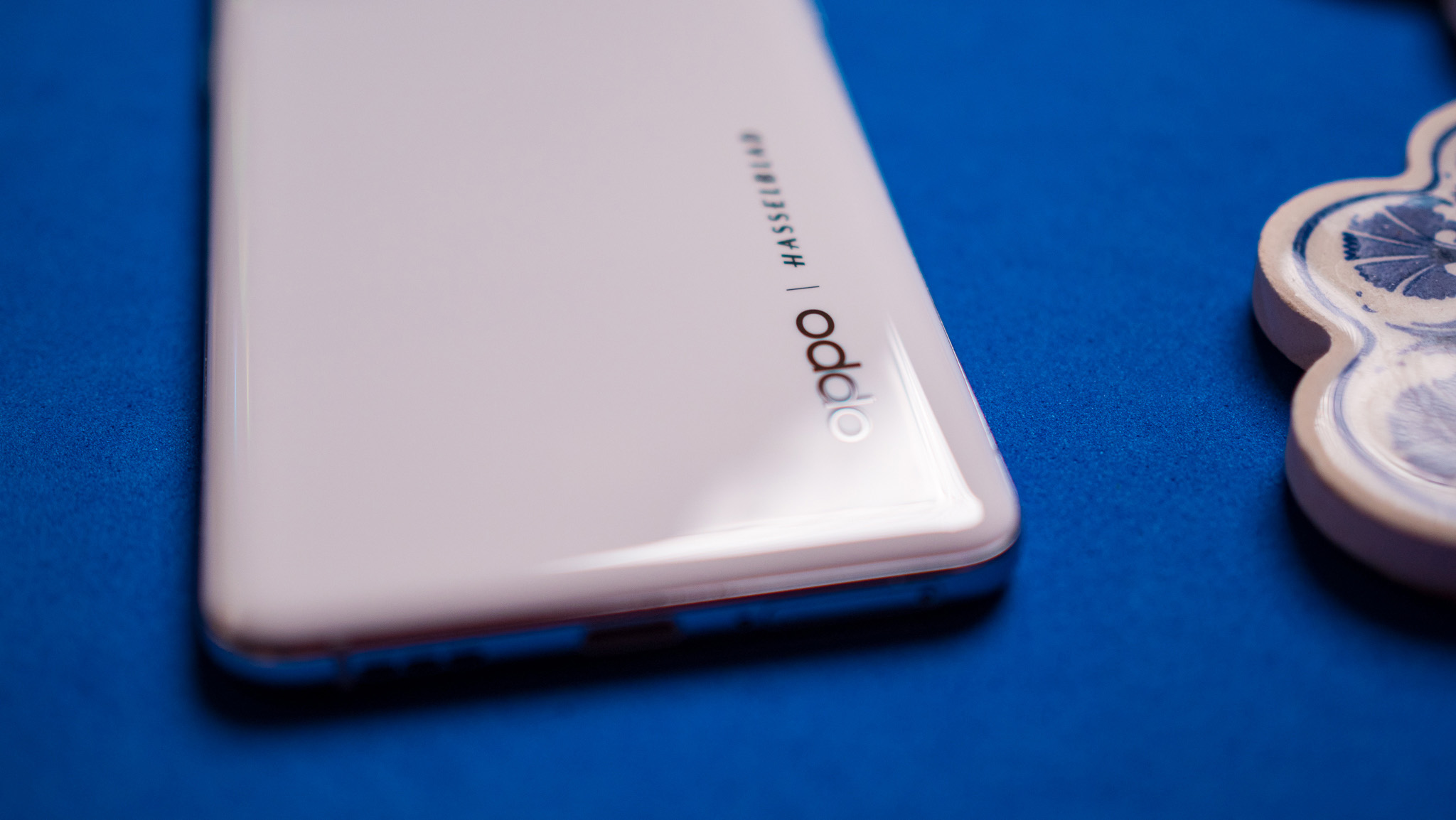
The Find X5 Pro was unveiled on February 24 at Mobile World Congress, and the phone is now up for sale globally. It is available in the UK, France, Germany, and other European countries, and is sold in select markets in the Middle East and Africa. As with other OPPO phones, the Find X5 Pro isn't launching in North America.
There's a single variant of the Find X5 Pro with 12GB of RAM and 256GB of storage, and it costs £1,049 ($1,365) in the UK.
OPPO also has a standard Find X5 variant that comes with an FHD+ 120Hz AMOLED screen, the Snapdragon 888 chipset, identical cameras as the Find X5 Pro, and 80W wired as well as 30W wireless charging. This version has a glass back and 8GB of RAM with 256GB of UFS 3.1 storage, and costs £749 ($975).
OPPO Find X5 Pro: Design
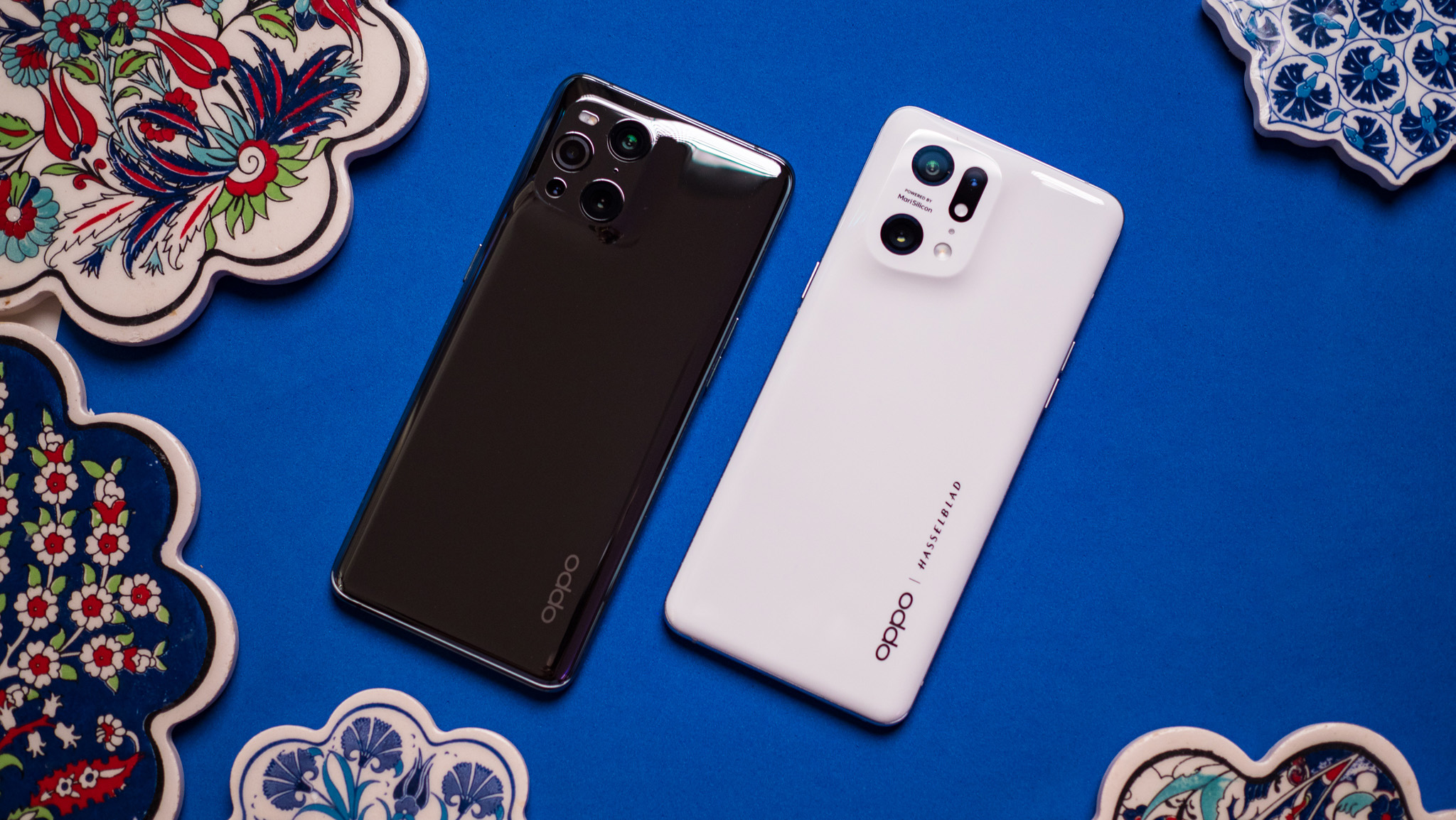
Last year's Find X3 Pro had a unique design with the camera island blending seamlessly into the chassis, and OPPO is building on that aesthetic on the Find X5 Pro.
The effect is a little more pronounced this year, and that makes the phone stand out even more than usual from the glass-and-metal designs that dominate this category.
The Find X5 Pro is the best-looking phone of 2022 yet — the ceramic chassis is gorgeous.
But the biggest difference this year has to do with the materials: the Find X5 Pro has a ceramic chassis, and that makes the integrated camera housing and curved design all the more impressive.
The Find X5 Pro is sold in two color options — Ceramic White and Glaze Black — and in my opinion, the white version looks more striking. The camera island isn't as busy as last year, and that's because the 2x zoom lens is now integrated into the cutout for the LED flash module.
The UK version of the Find X5 Pro has a lot of regulatory text at the back that detracts from the design, but the Chinese version I'm using (CPH2035) doesn't include these labels; there's just the OPPO logo along with Hasselblad branding at the back.
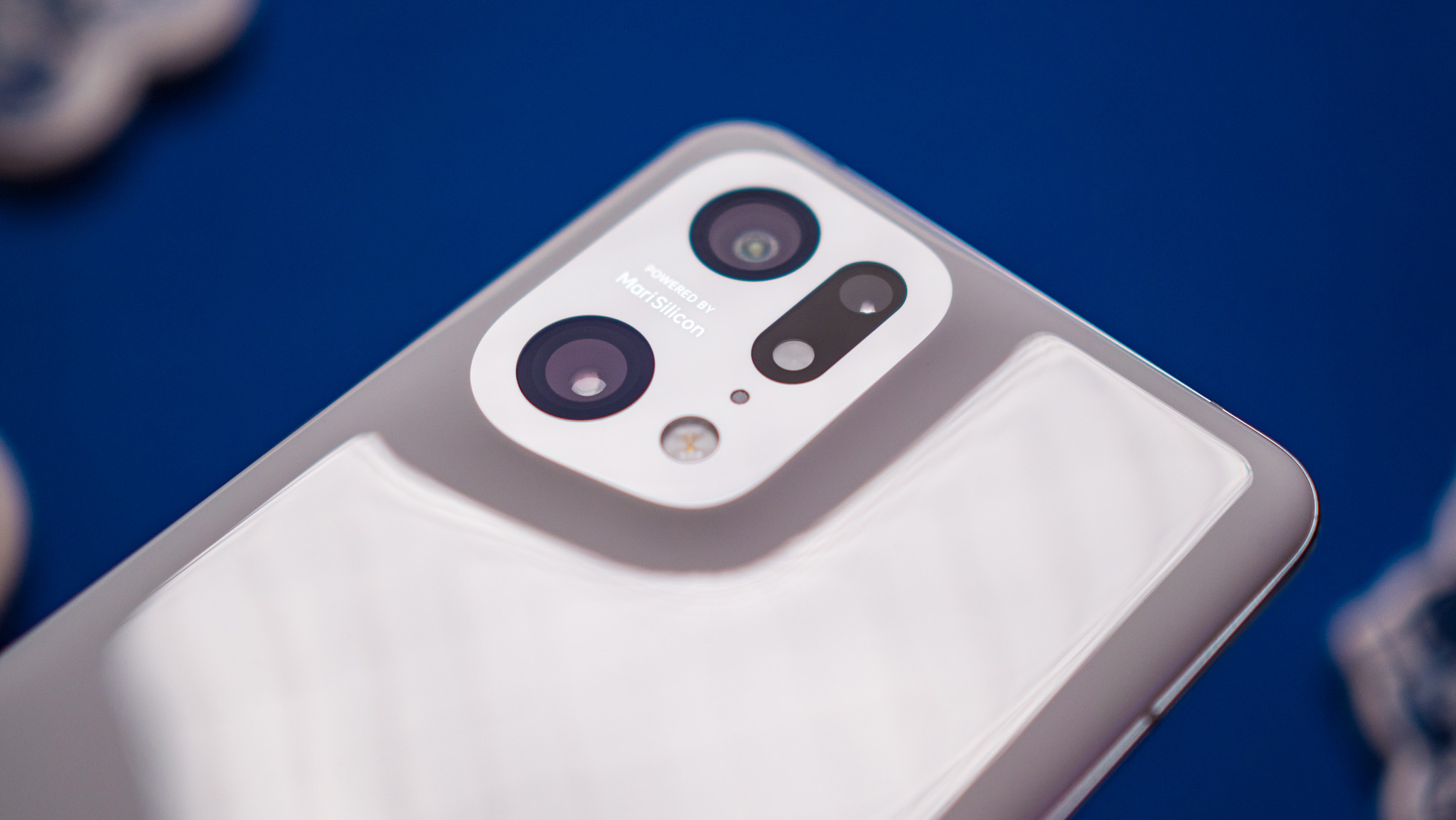
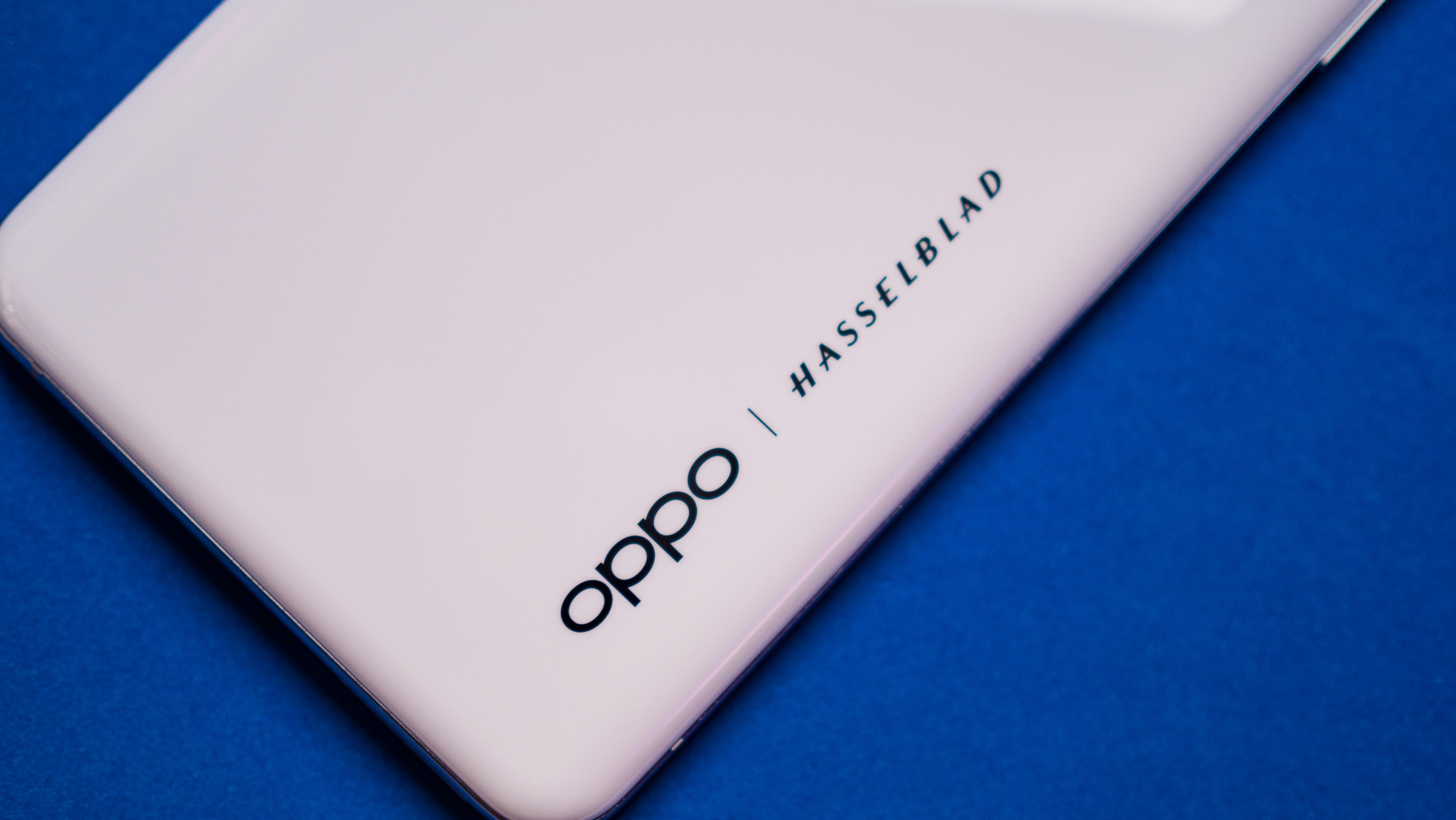
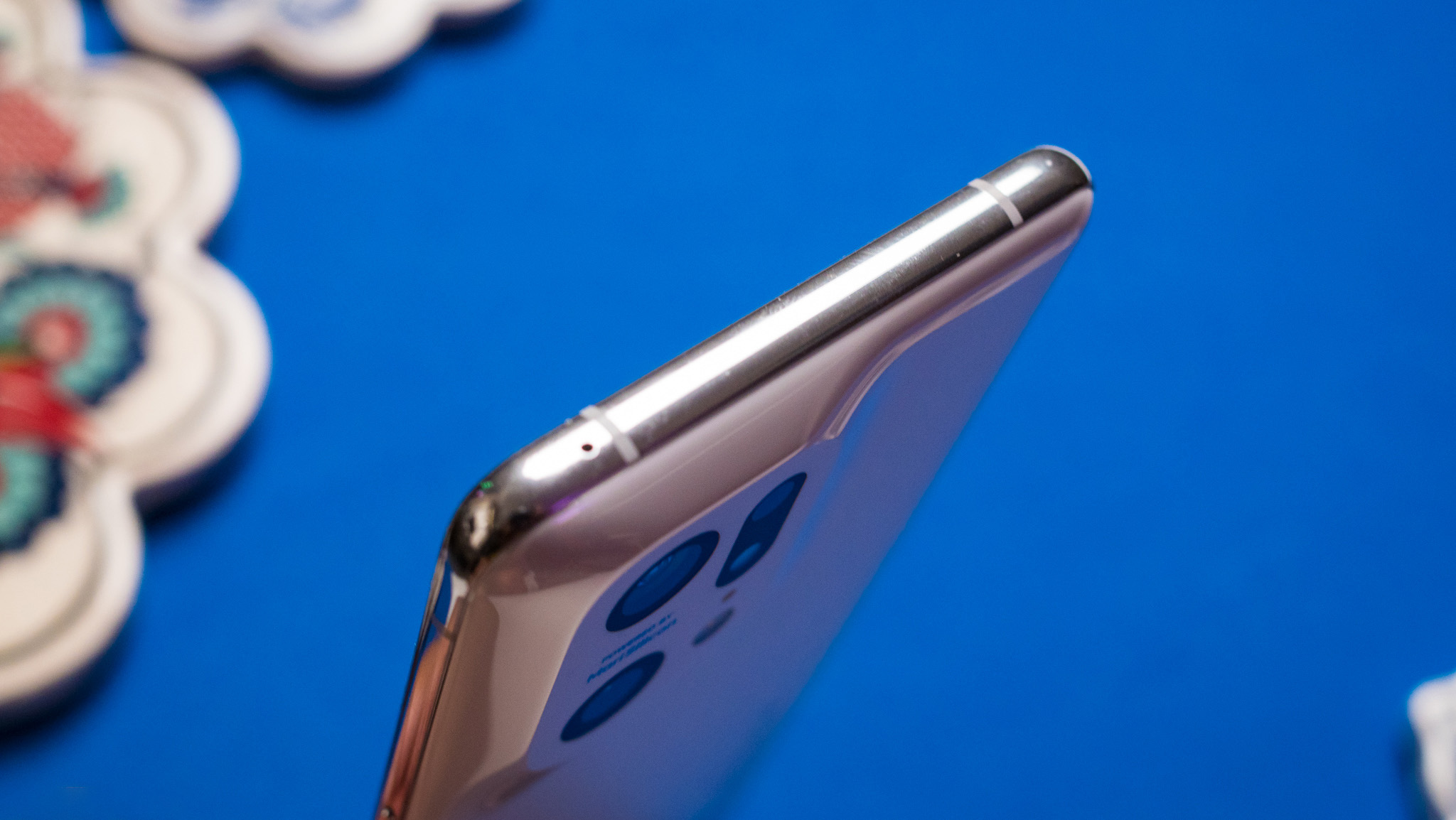
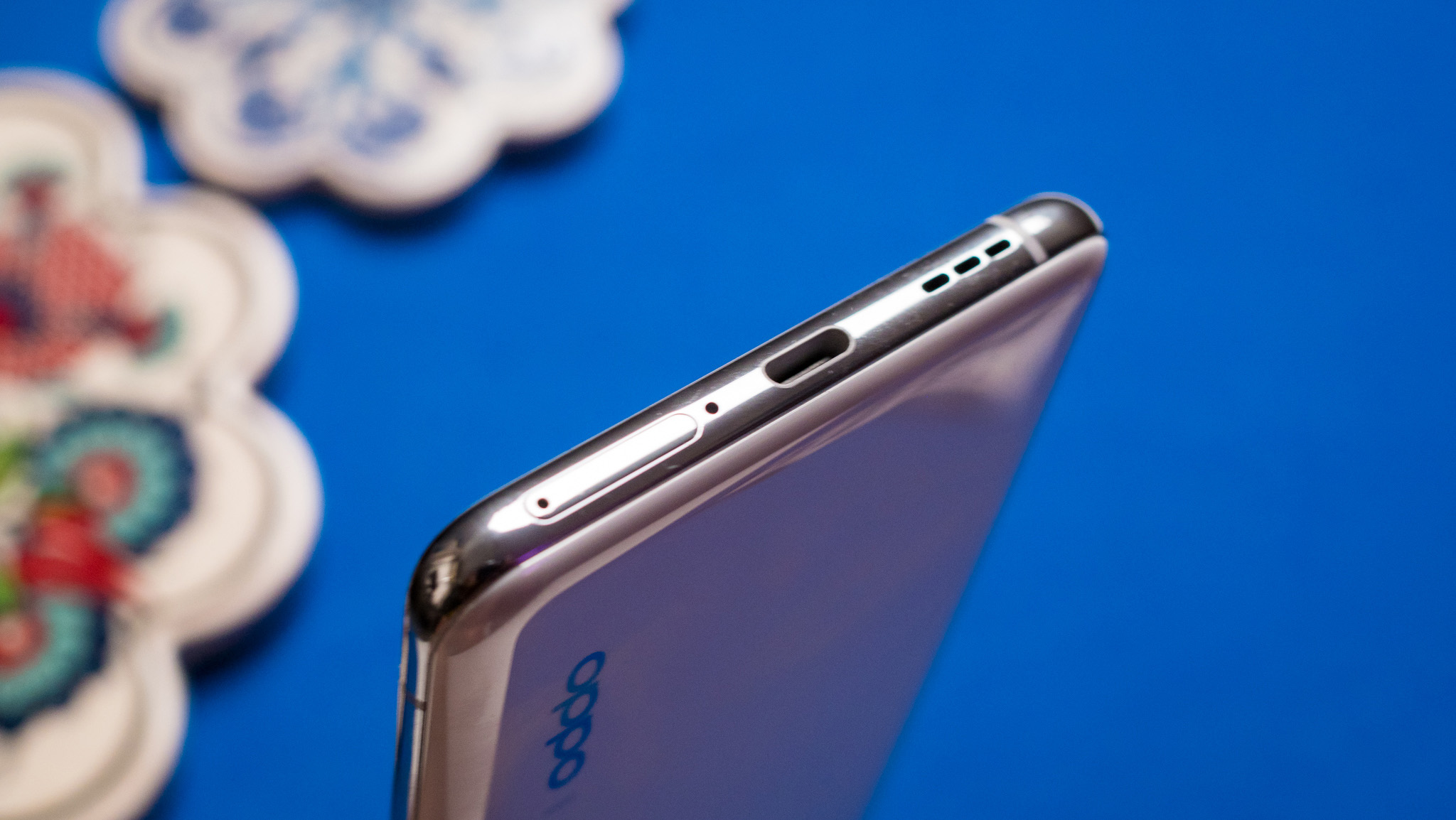
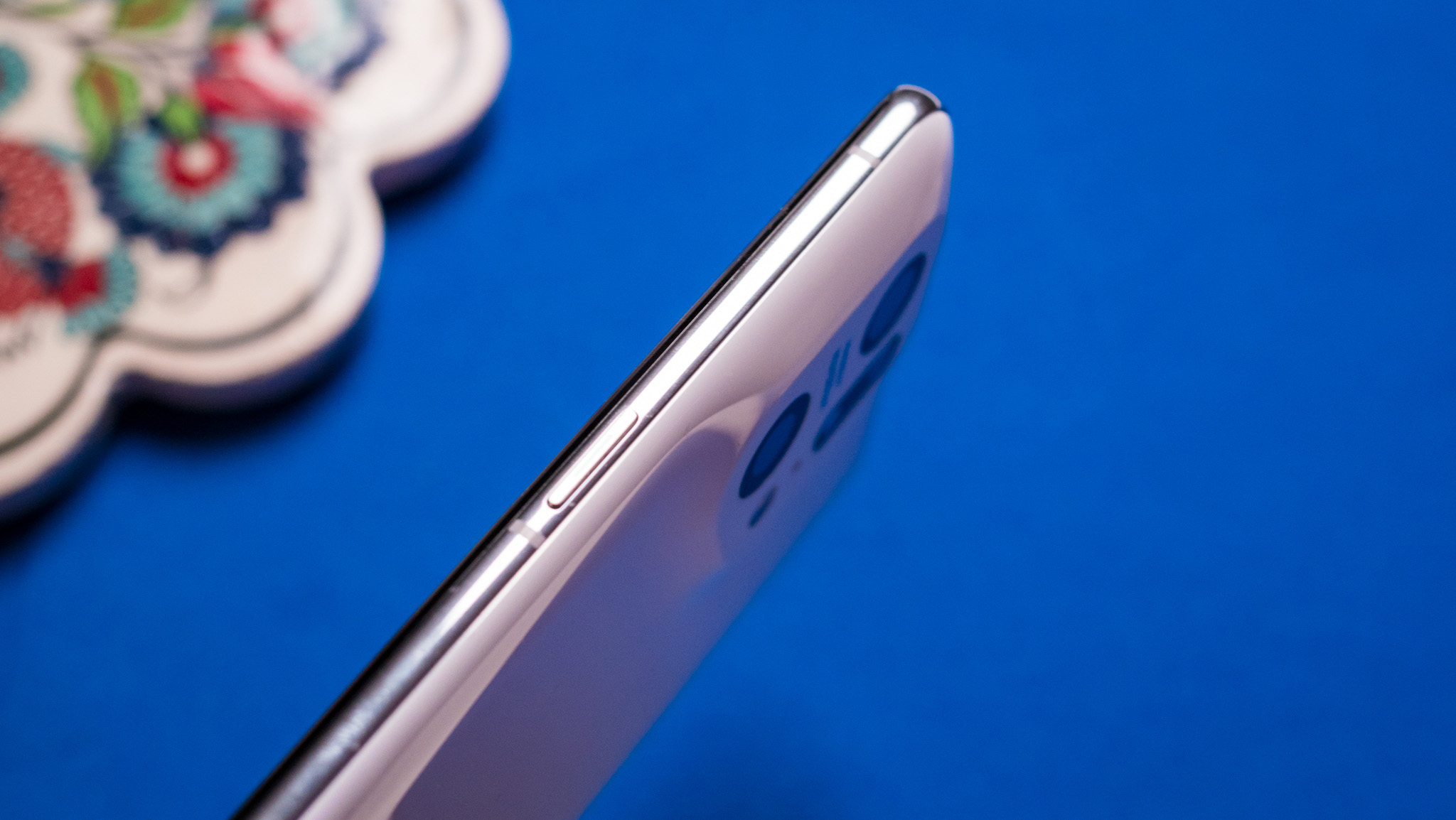
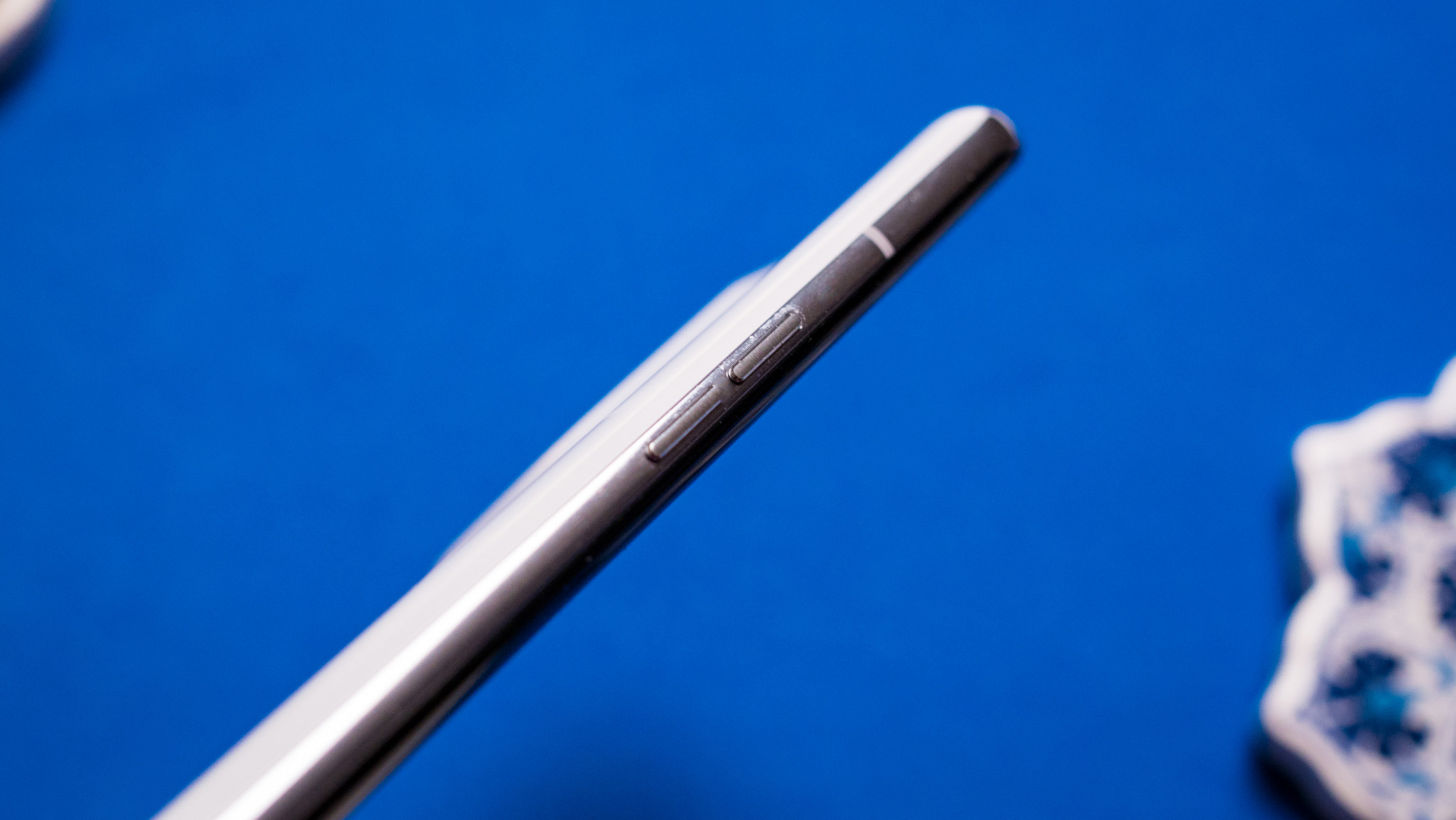
The back of the phone curves gently to meet the mid-frame, and it makes holding and using the Find X5 Pro that much more comfortable. The phone is 6.3mm taller and 0.9mm thicker than the Galaxy S22+, and at 218g, it is 23g heavier — this is down to the ceramic chassis and the larger 5000mAh battery.
In spite of the added weight, the Find X5 Pro feels great to use, and the weight is ideally balanced; it doesn't feel top-heavy in the least. The curves from the back and front cut into the mid-frame, but there's still enough thickness here to hold the phone without it becoming unwieldy.
The Chinese model has a dual SIM card tray, but the global version has a single SIM card slot — you'll have to use an eSIM if you want a secondary number on the Find X5 Pro.
Overall, the Find X5 Pro gets a lot right in terms of design. The ceramic back is fabulous and it is more resistant to tumbles, the phone feels great to hold and use, and although it is heavy, it is well-balanced. This may just be my favorite phone design of 2022, and that white color option in particular looks very distinctive.
OPPO Find X5 Pro: Display
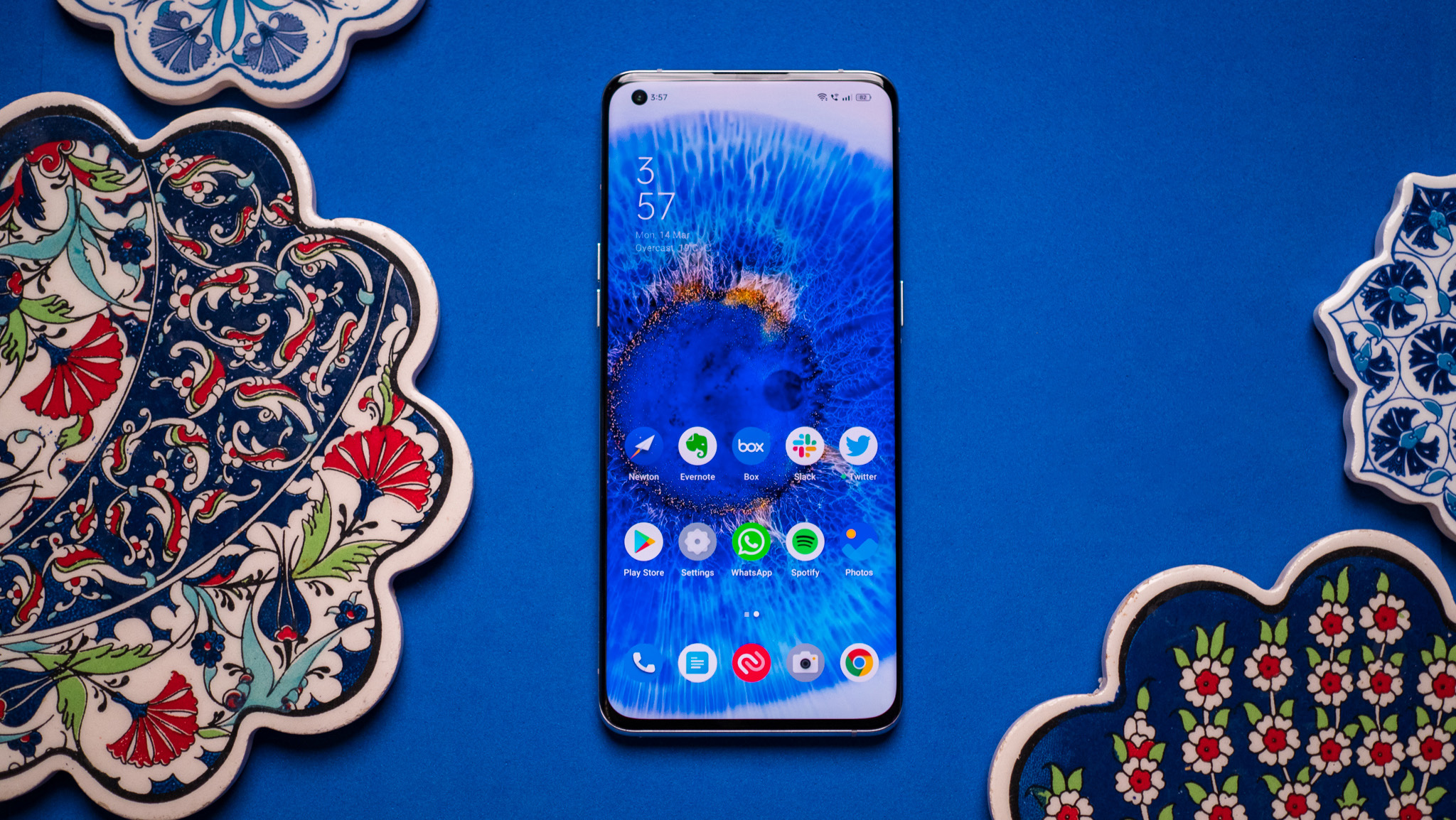
The Find X5 Pro uses the same screen as last year, but there are a few meaningful tweaks. But first, a look at the numbers: you get a 6.7-inch QHD+ (3216 x 1440) AMOLED panel with 120Hz refresh, up to 1000Hz touch polling, and max brightness up to 1,300 nits. The screen is backed by a layer of Gorilla Glass Victus.
This QHD+ 120Hz AMOLED screen is one of the best you'll find on any phone today.
While the panel itself is unchanged from last year, there's better color calibration out of the box. OPPO notes that it calibrated the screen at 100nits, so you get the same color vibrancy when using the phone indoors with the brightness turned down.
The phone has Vivid and Natural color modes, and there's also a Pro option that lets you switch to the DCI-P3 color gamut or sRGB. Regardless of whatever mode you choose, you can manually adjust the color temperature between cooler and warmer tones.
You get an extensive set of customization options for the screen: there are three styles for dark mode, and you can manually set dark mode for third-party apps that don't have the feature yet (looking at you, LinkedIn). Xiaomi has a similar feature within MIUI, but I found OPPO's implementation to work better for inverting colors.
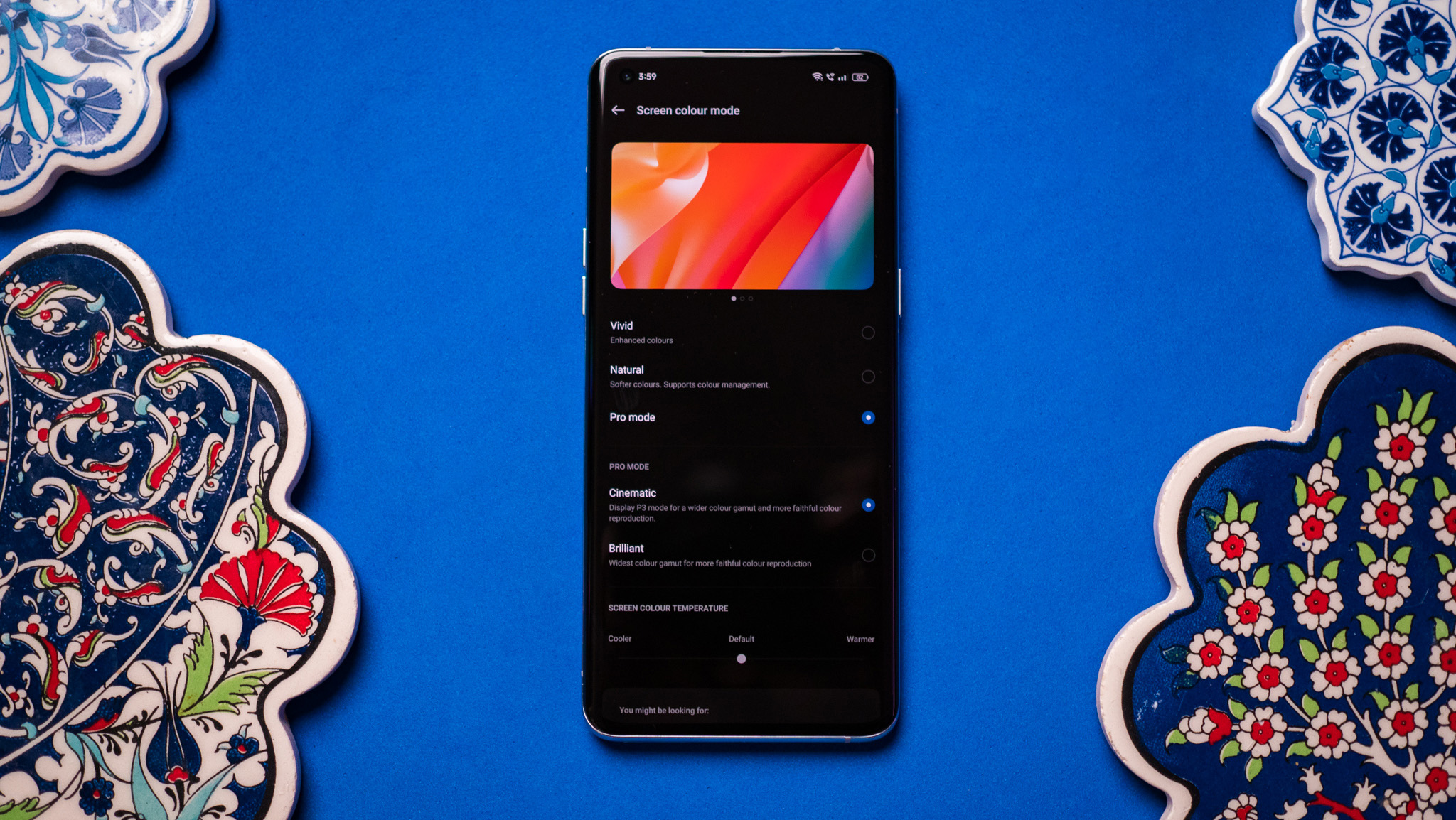
The always-on mode lets you view the time, battery level, and pending notifications without having to unlock the screen, and it can be scheduled. You also have plenty of clock faces to select from, and you can even set up your own patterns.
As you'd imagine from a phone in this segment, the screen is fantastic in day-to-day use; colors are vibrant, you get excellent contrast levels, and dynamic scaling works really well. The phone defaults to FHD+ and 60Hz refresh out of the box, but you can switch to QHD+ and 120Hz mode via the settings.
The display has LTPO tech that lets it dynamically adjust the screen refresh on the fly — if you're watching a video, it goes down to 30Hz, and comes back up to 120Hz for social media and general navigation.
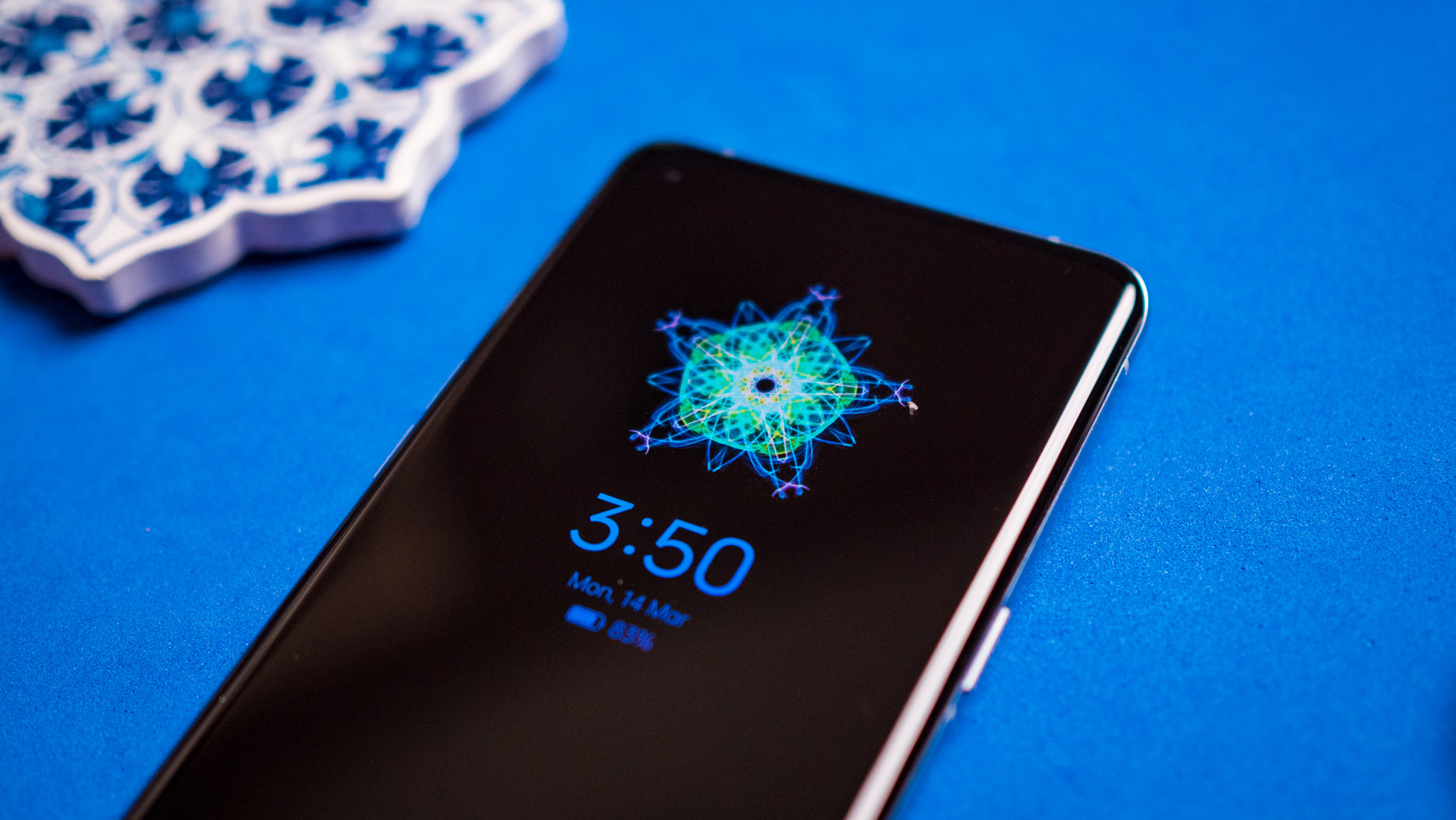
OPPO is introducing LTPO2 on the Find X5 Pro that makes a few tweaks to the dynamic refresh feature. The mode now changes refresh rate based on zones; for instance, if you're in split-screen mode and have a video playing on one side and social media running on the other half, the refresh rate for those two sections of the screen will be different.
The video portion would be at 30Hz or 60Hz, and for the social media app you're using, you'll get the full 120Hz. OPPO notes that the scaling is also faster, so switching from 30Hz to 120Hz or vice versa now takes just a few milliseconds. The screen goes all the way down to 1Hz for static content.
The dynamic refresh combined with the high-res AMOLED screen make the Find X5 Pro an absolute joy to use for gaming and general browsing. There's stereo sound as well, and it gets pretty loud; it's still not quite as good as the Mi 11 Ultra or the quad driver array that Xiaomi introduced in the 12 Pro, but it's close. There's no distortion at high volume, and the stereo channels make a lot of difference when gaming or streaming YouTube videos.
OPPO Find X5 Pro: Performance

It wouldn't do for any flagship launching in 2022 to miss out on Qualcomm's latest silicon, and as such the Find X5 Pro is powered by the 4nm Snapdragon 8 Gen 1. There's also a larger multi-tier cooling system that's designed to ensure the phone doesn't overheat during gaming sessions, and in the time I used the phone, I didn't notice any issues with thermals.
You get all the extras you'd want from a 2022 flagship.
There isn't much to talk about the Snapdragon 8 Gen 1. It delivers incredible performance in just about any scenario, and I don't see that changing for at least a few years. The Find X5 Pro runs through day-to-day tasks without breaking a sweat, and for most use cases, the hardware on offer is overkill.
As for memory and storage, the Find X5 Pro is sold in a single 12GB/256GB configuration, and I like that OPPO is now offering 256GB of storage as standard on its mid-range and high-end devices. There's no microSD slot here, but the internal storage should be more than adequate for most users.

Another feature I like is the haptic engine; the Find X5 Pro has a vibration motor that delivers excellent feedback. And like everything else about the phone, it is inherently customizable — you can adjust the vibration intensity and pattern of feedback from the settings. OPPO did a brilliant job here, and the same motor made its way to the OnePlus 10 Pro and other BBK offshoots of the Find X5 Pro.
When it comes to connectivity, you'll find Wi-Fi 6E, Bluetooth 5.2, NFC, AptX HD audio codec, and global 5G bands with a 360-degree antenna design. While the Find X5 Pro isn't launching in North America, it has the requisite Sub-6 5G bands for the region. Here's the breakdown of all the 5G bands: n1/2/3/5/7/8/12/13/18/20/25/26/28/38/40/41/66/77/78/79.
And finally, the Find X5 Pro includes IP68 dust and water resistance, giving it the ability to withstand the elements. You're getting all the hardware features you could want in a flagship, and the Find X5 Pro holds its own against the best Android phones.
OPPO Find X5 Pro: Battery
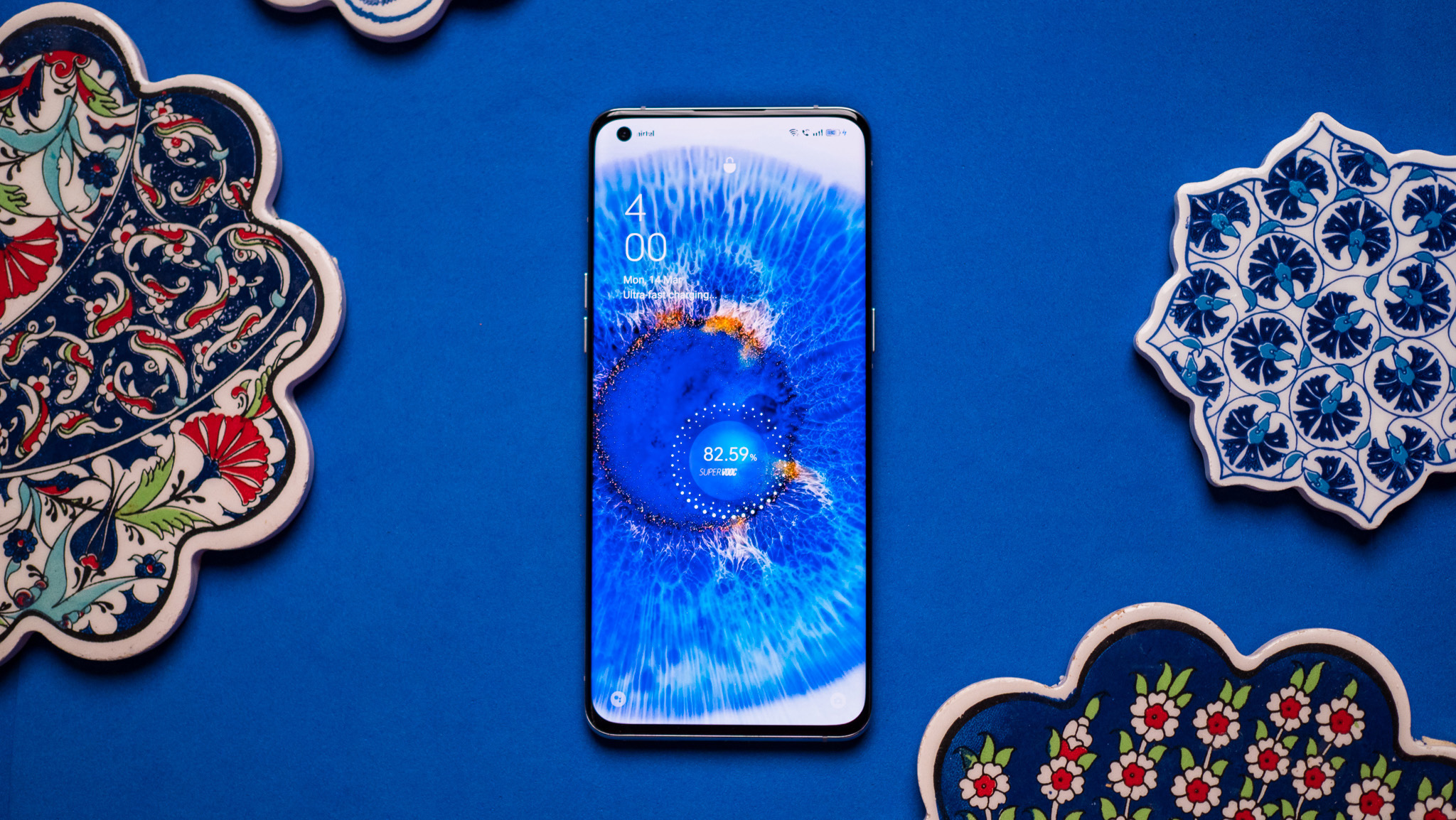
OPPO has a long history of innovation around charging tech; the first phone with the manufacturer's 25W VOOC standard debuted in 2014. There are now over 220 million phones globally with OPPO's fast charging tech, and while 150W wired charging is on the horizon, the Find X5 Pro gets 80W wired and 50W wireless charging.
That's still better than the 65W solution we got last year on the Find X3 Pro. The Find X5 Pro gets a larger 5000mAh battery as well, and it uses the same dual-cell configuration we've seen in the last two years. Unlike Samsung and Xiaomi, OPPO still includes a charger in the box, and the 80W SuperVOOC wall plug takes under 40 minutes to fully charge the battery.
But what's more interesting is the fact that it takes just 10 minutes to go from flat to 43%, with a 15-minute charge delivering 60%. I wasn't able to test the efficacy of the 50W AirVOOC wireless charger, but the brand notes that it takes 47 minutes to fully charge the battery wirelessly.
Best of all, the 80W charger works over USB PD, so you can easily charge other devices.
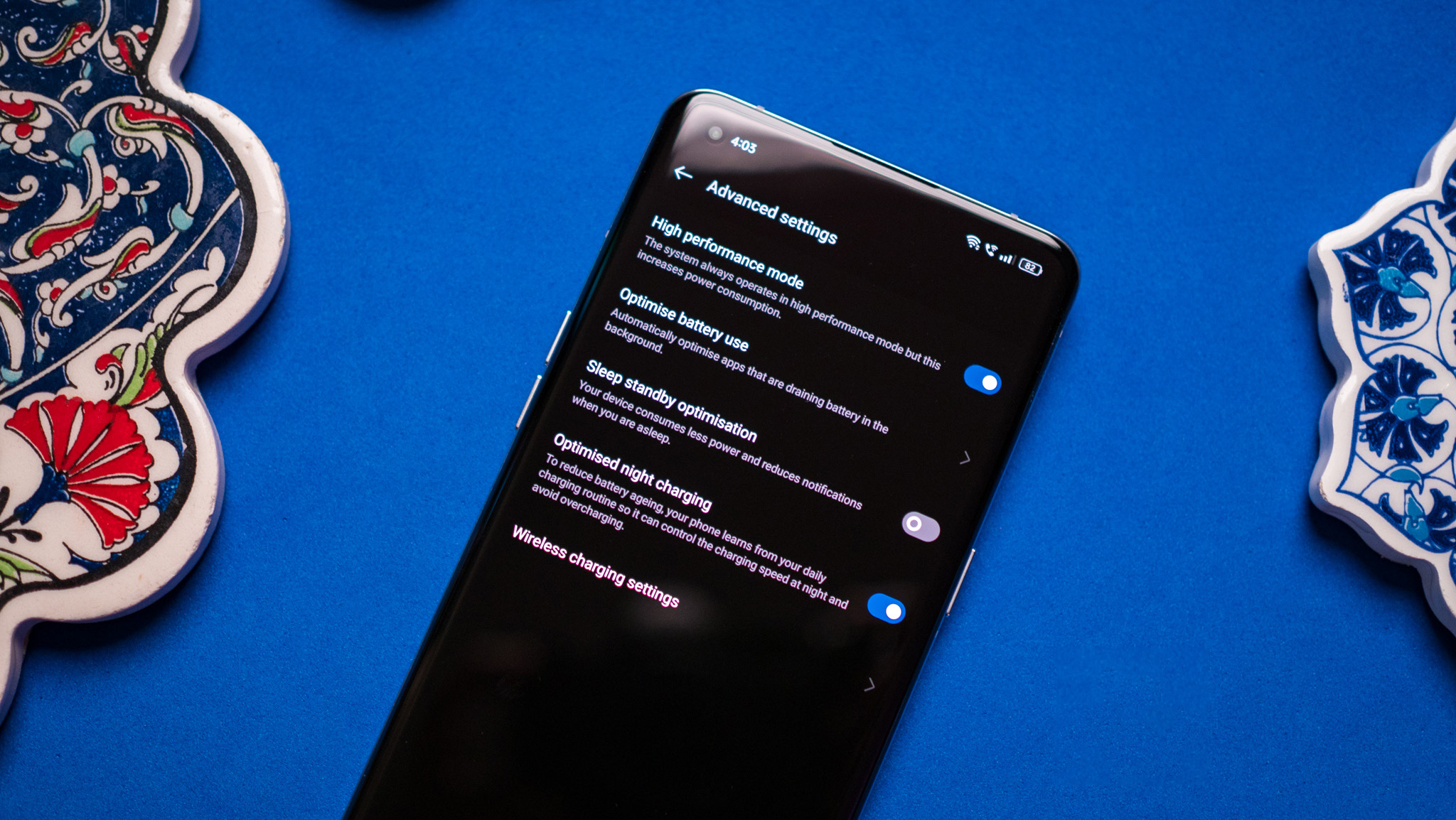
Battery life itself is pretty standard fare; I got a full day's worth of use from the Find X5 Pro with the always-on mode enabled. I averaged just over 4.5 hours of screen-on-time over the course of the day, and that's on par with the S22 Ultra that I was using previously.
Another big change this year is the introduction of the Battery Health Engine (BHE). Battery degradation is a real issue with fast charging tech — particularly 65W and above — and while the industry quotes 600 charge cycles without any noticeable degradation, that doesn't hold up in actual use. OPPO is looking to improve those figures with BHE, which involves a suite of algorithms that optimize battery use along with hardware-level changes to fine-tune battery charging.
The result is that the Find X5 Pro is guaranteed to last 1600 charge cycles before you see any noticeable battery degradation. We'll obviously have to wait and see how this plays out over the coming months, but OPPO is betting on BHE to extend battery longevity, and the tech has made its way to other BBK devices, including the Realme GT Neo 3.
OPPO Find X5 Pro: Cameras
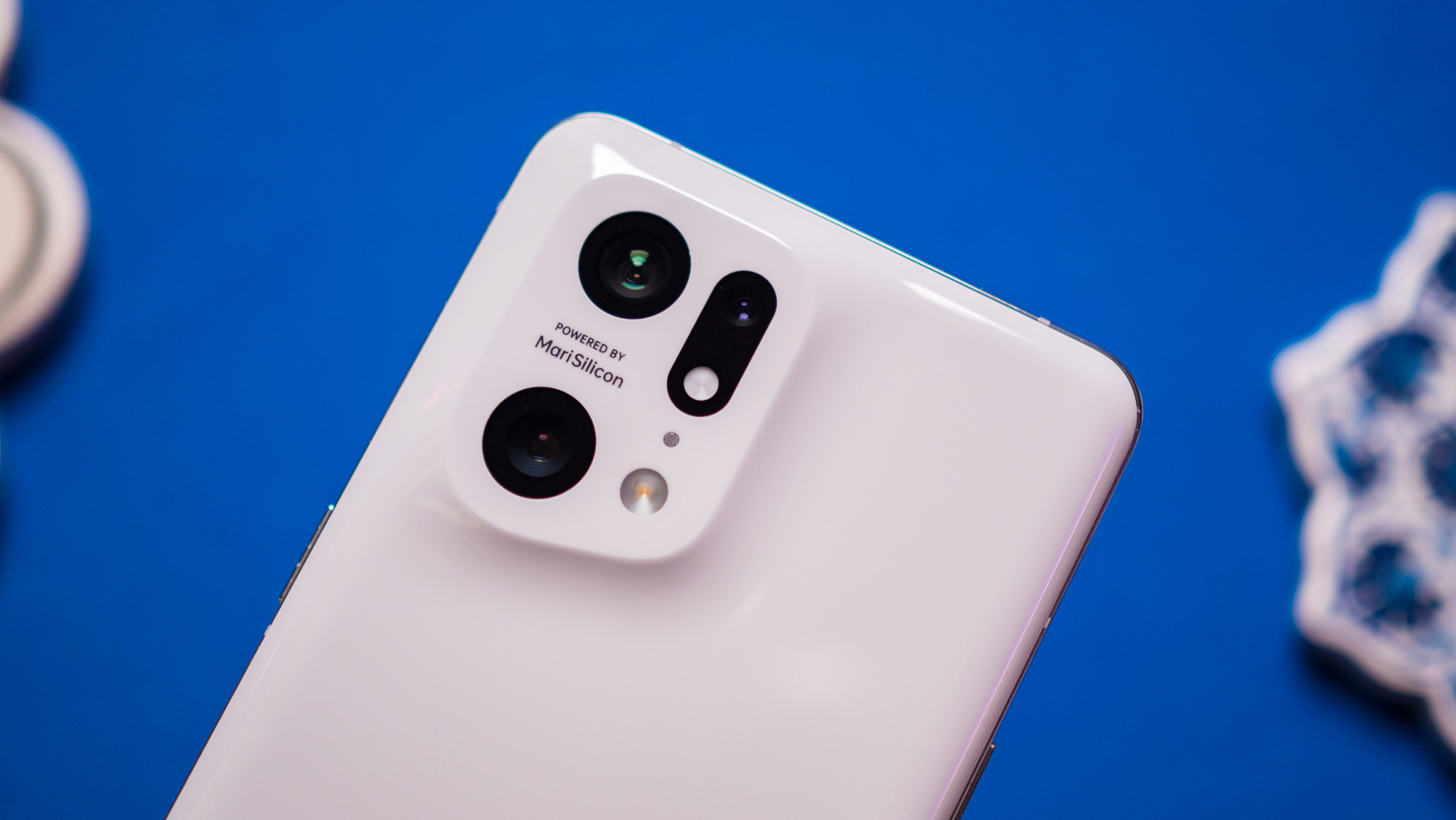
The Find X5 Pro doesn't have new camera hardware; it's using the same dual 50MP lenses as its predecessor. You get a 50MP f/1.7 Sony IMX766 primary lens alongside a 50MP f/2.2 Sony IMX766 wide-angle module with 110-degree field of view. The 13MP telephoto is back as well, and you get the same 2x optical zoom.
There's a brand-new 32MP camera at the front with a customized Sony IMX709 RGBW sensor that was made in collaboration with OPPO. If that sounds familiar, it's because the sensor debuted on the Reno 7 Pro.
The Find X5 Pro takes phenomenal photos in challenging conditions.
What's new this year is the stabilization. The Find X5 Pro gets 5-axis stabilization with a 3-axis sensor shift system that leads to much better videos. But the biggest addition is the MariSilicon X NPU, OPPO's first custom silicon for imaging. MariSilicon X is built on a 6nm node, and the ISP provides noteworthy gains when taking photos and videos. It's designed to deliver natural skin tones, improve detail and photo quality in conditions with little to no lighting (under 10 lux), and decrease noise levels in low-light shots.
Going with an in-house NPU obviously gives OPPO greater freedom to tweak the camera, and the Find X5 Pro delivers exciting gains in low-light and video. MariSilicon X works with all three sensors at the back and the front 32MP camera on the Find X5 Pro, but it is limited to the back cameras on the standard Find X5.
That's not all either; the Find X5 Pro sees the commencement of OPPO's Hasselblad partnership, with the Chinese manufacturer working closely with the Swedish camera giant to fine-tune its processing algorithms.
OPPO says that it understands what its customers are looking for when it comes to the cameras, and it teamed up with Hasselblad to deliver natural colors. OPPO's tuning gravitated toward oversaturated colors in the past, so it's good to see the brand changing its strategy to focus instead on accurate colors.
Of course, you also get a custom shutter sound and UI changes similar to the OnePlus 9 series, and you'll find three filters designed by Hasselblad Masters.
















As you'd imagine, the Find X5 Pro takes fabulous photos in daylight conditions, preserving detail and dynamic range while delivering accurate colors. Having used the Find X3 Pro a lot last year, it's immediately evident that photos aren't as saturated as they used to be, and that's a good thing.
Where the Find X5 Pro truly shines is low-light scenarios and portrait shots. The MariSilicon X really comes into its own in these situations, producing some of the best photos you'll get out of any phone today.
Low-light shots have plenty of detail, little to no noise levels, great dynamic range, and in photos where a light source is dominating one section of the scene, the Find X5 Pro manages to eke out details from the shadows without overexposing the rest of the scene.
The front 32MP camera may just be the best selfie camera around, and it automatically adjusts its field of view between 80 and 90 degrees based on the number of subjects in the frame.
While the front camera is great for photos, it is limited to 1080p video. OPPO says it focused on the back cameras for this generation — both for stills and 4K video — and that it will bring this particular feature to next year's Find X flagship.
The one issue I have with the Find X5 Pro is the wide-angle lens. Although it uses the same hardware as the primary lens, it doesn't deliver the same caliber of shots — you tend to get photos with washed-out colors. In a similar vein, the 13MP zoom lens is good for 2x zoom, but it struggles beyond that.
It's clear that the priority for OPPO with the Find X5 Pro was to deliver a device that can take great photos and videos in challenging scenarios, and it managed to do that. And as for the issues with the wide-angle lens, a software update has made it a little more consistent, but it is still not on par with the best in this category.
OPPO Find X5 Pro: Software
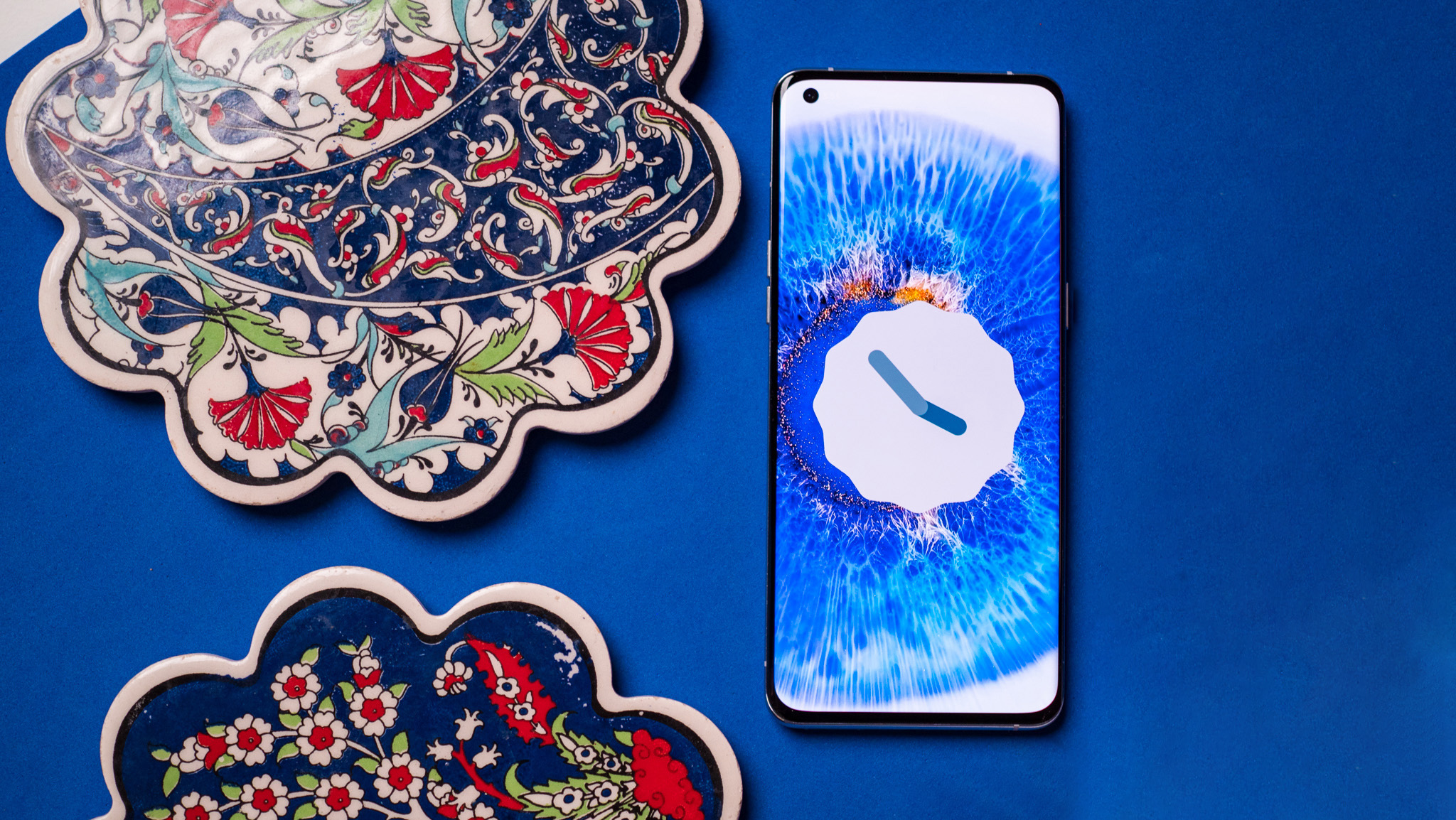
The Find X5 Pro runs ColorOS 12.1 based on Android 12 out of the box. This is a minor refresh of the ColorOS 12 release that debuted last year with several stability and optimization tweaks.
ColorOS 12 is one of the best Android skins you'll find today, and considering it forms the basis for OxygenOS 12 and Realme UI 3.0, it is used widely. The UI itself is clean and modern, and you'll find a lot of customizability.
ColorOS 12 is modern, clean, and highly customizable — but there are software bugs at launch.
While it lacks the Material You aesthetic, OPPO has its own version of the color picker that lets you select accent colors based on dominant color of the phone's background. This feature doesn't work across the board, so you'll find a few icons that have their default accent colors.
You get all the latest features in Android 12,including a privacy dashboard, recording indicators, toggles to turn off system-wide access to the mic and camera, and approximate location sharing. In addition, OPPO has its own suite of features: the floating windows mode is very useful, there's a powerful theming engine, ringtones and notification sounds based on nature, gesture customization, and much more.
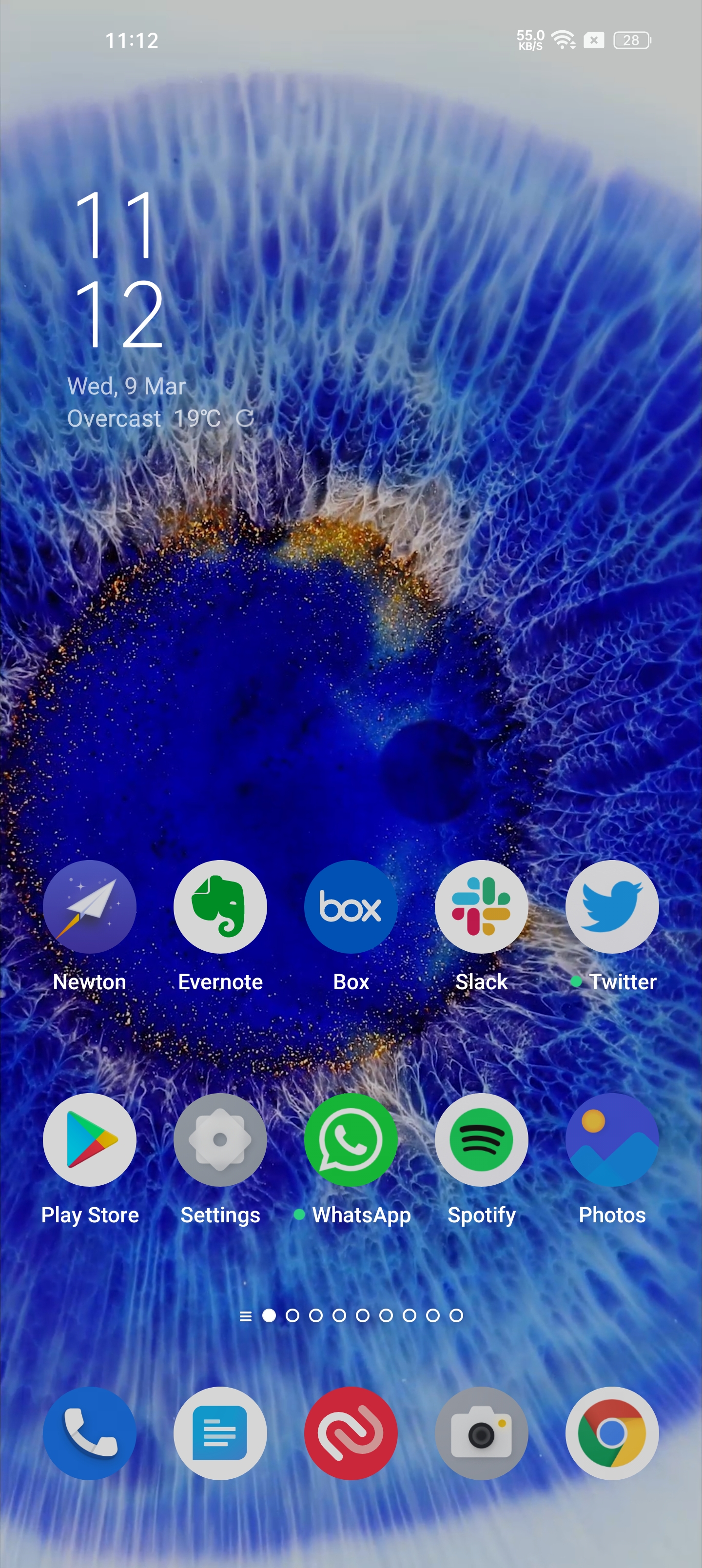
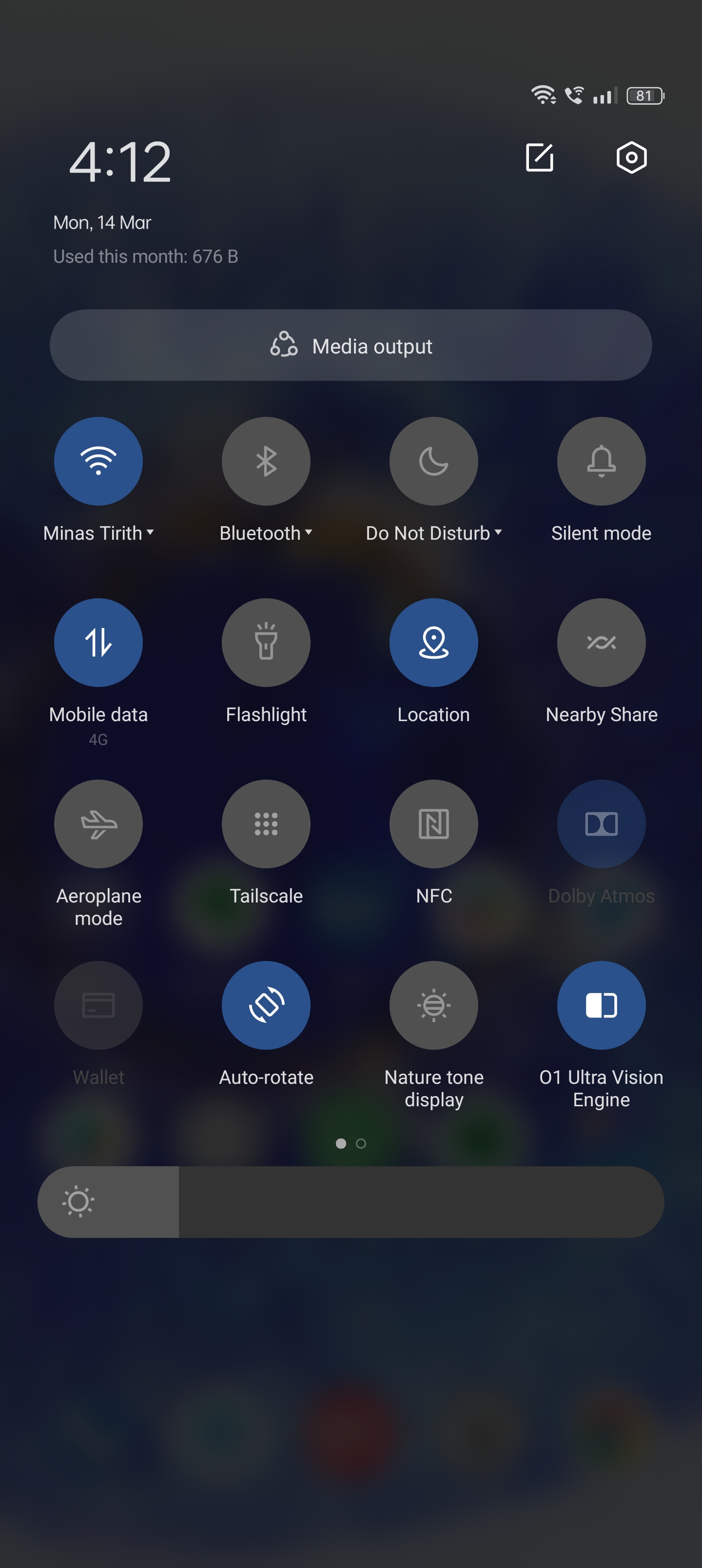
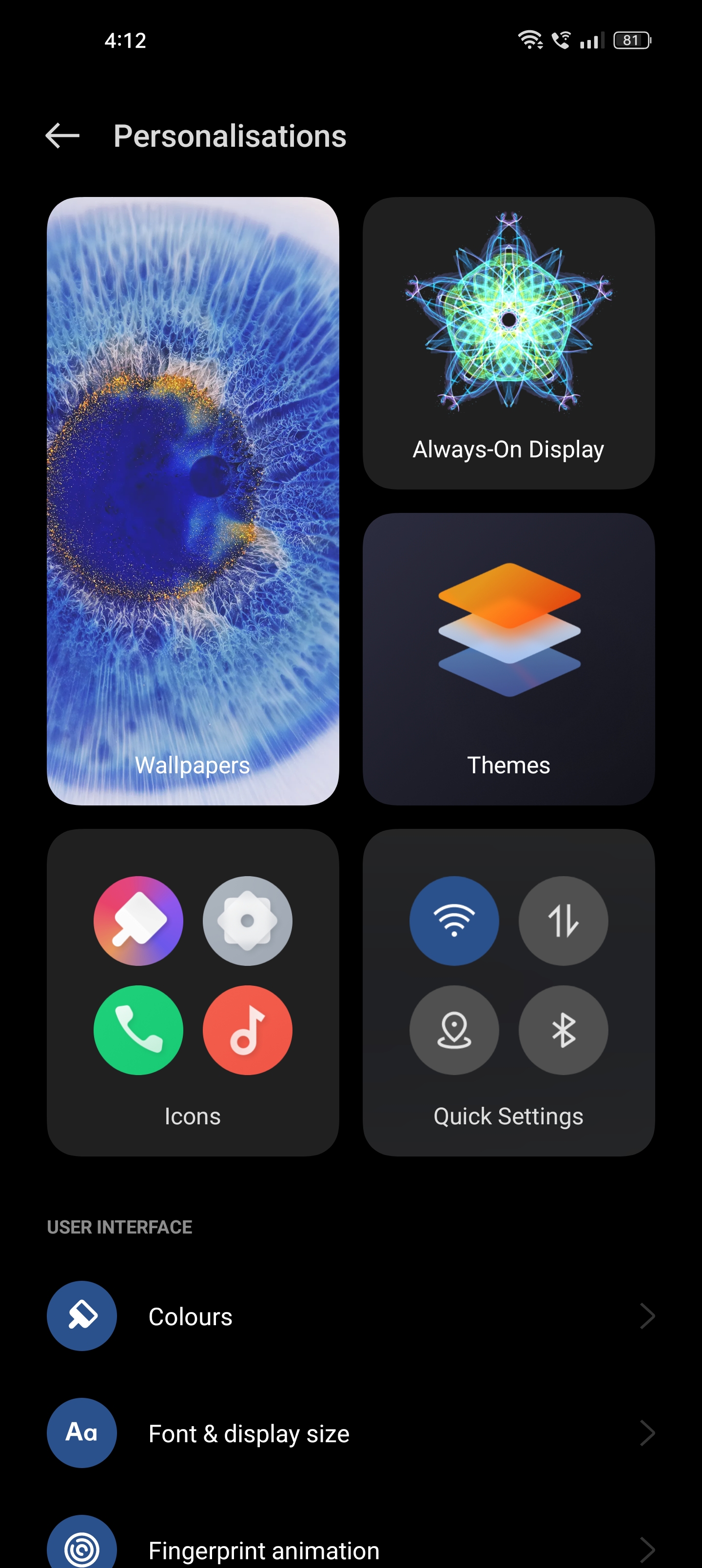
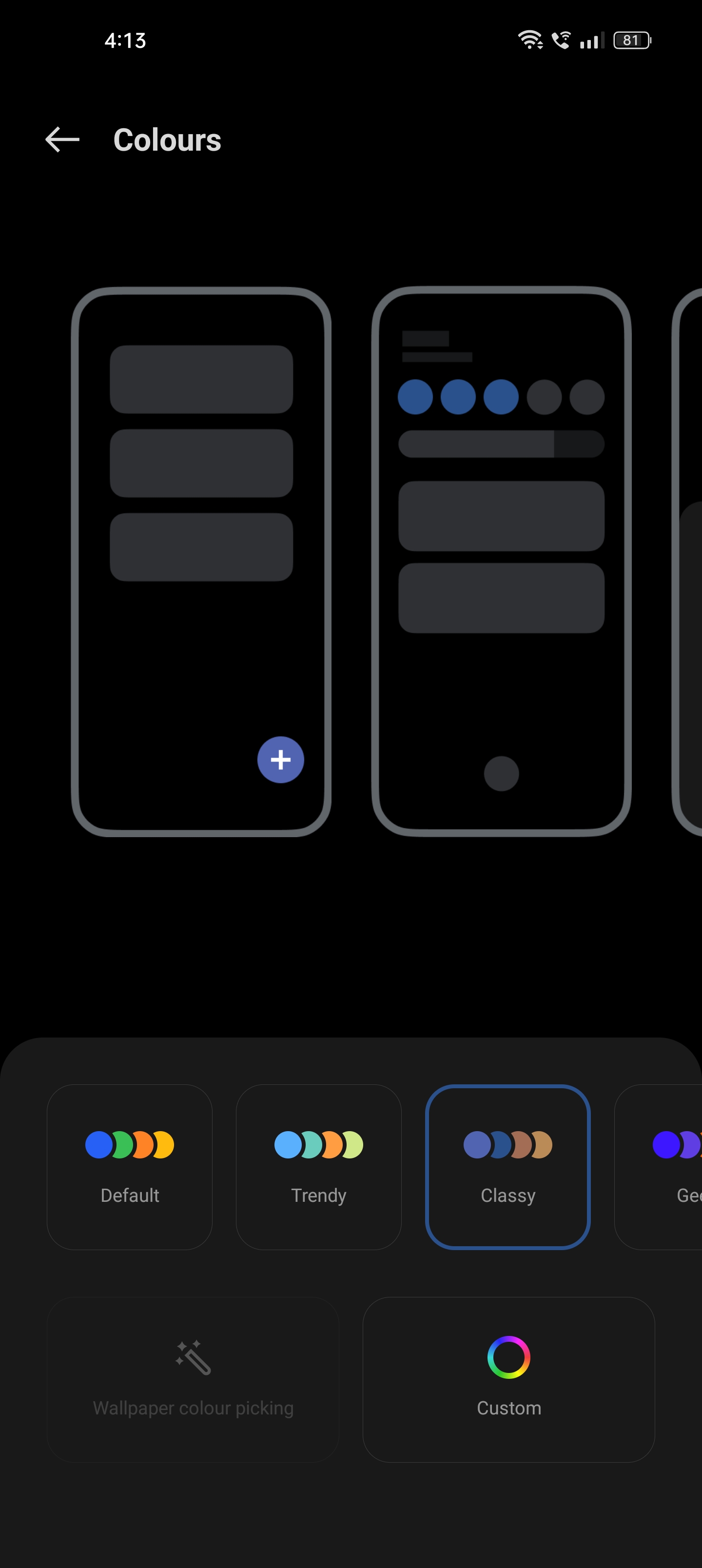
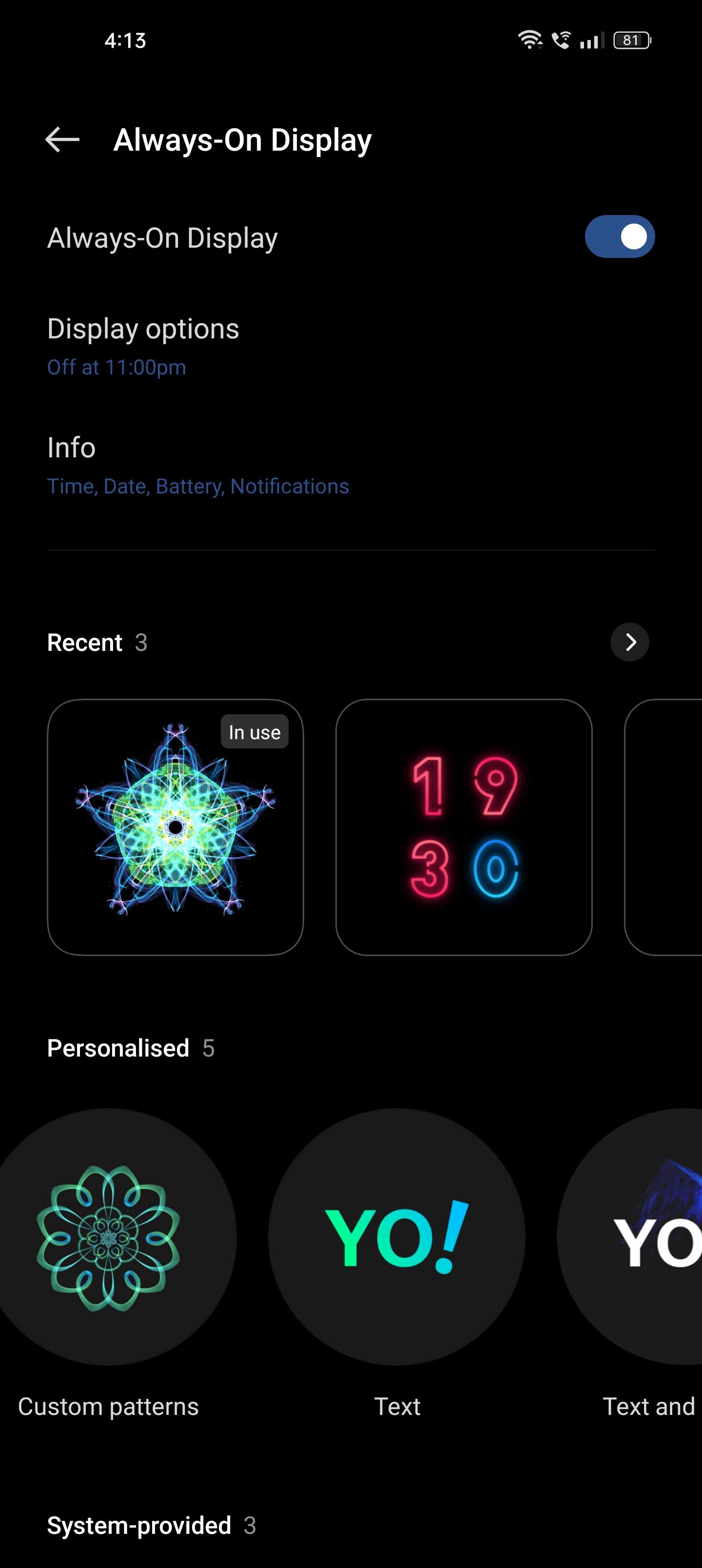
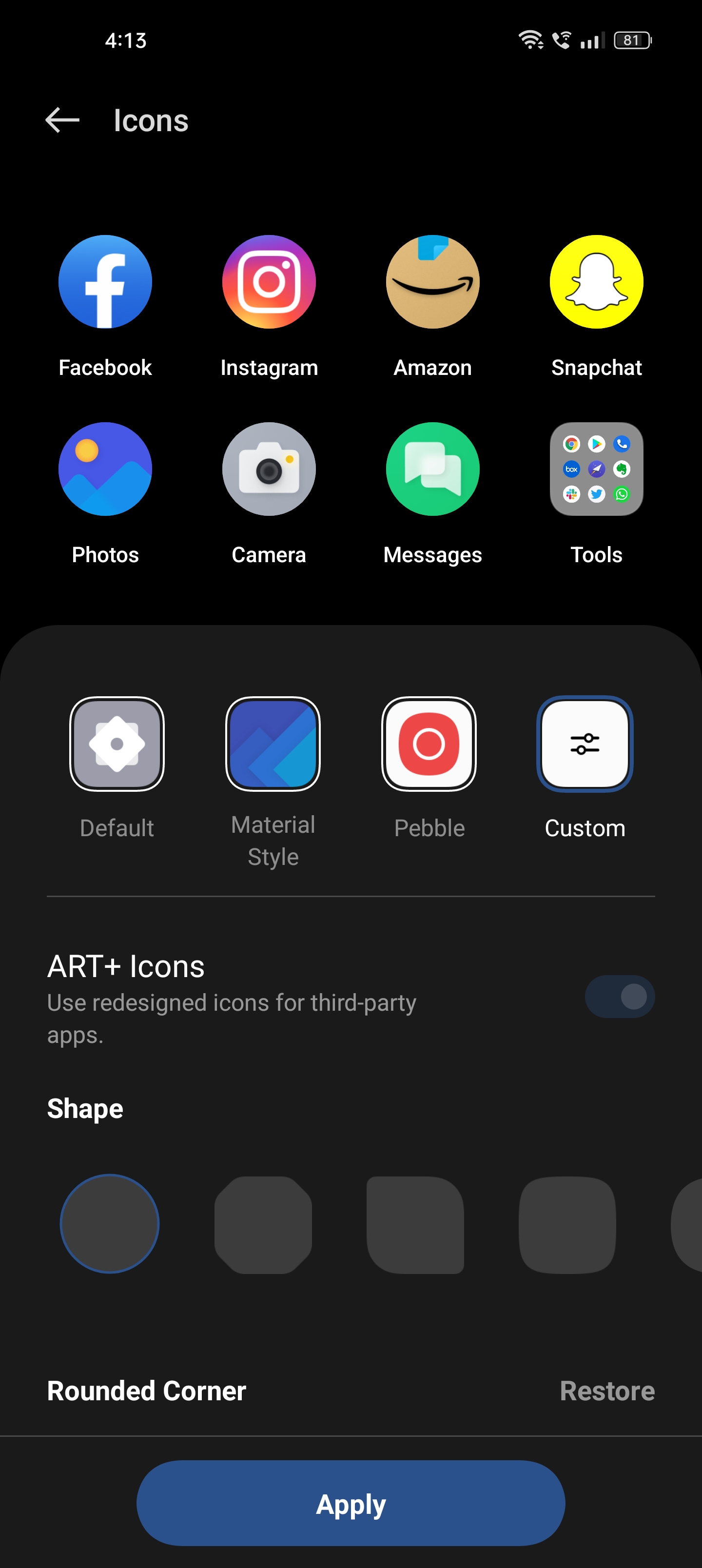
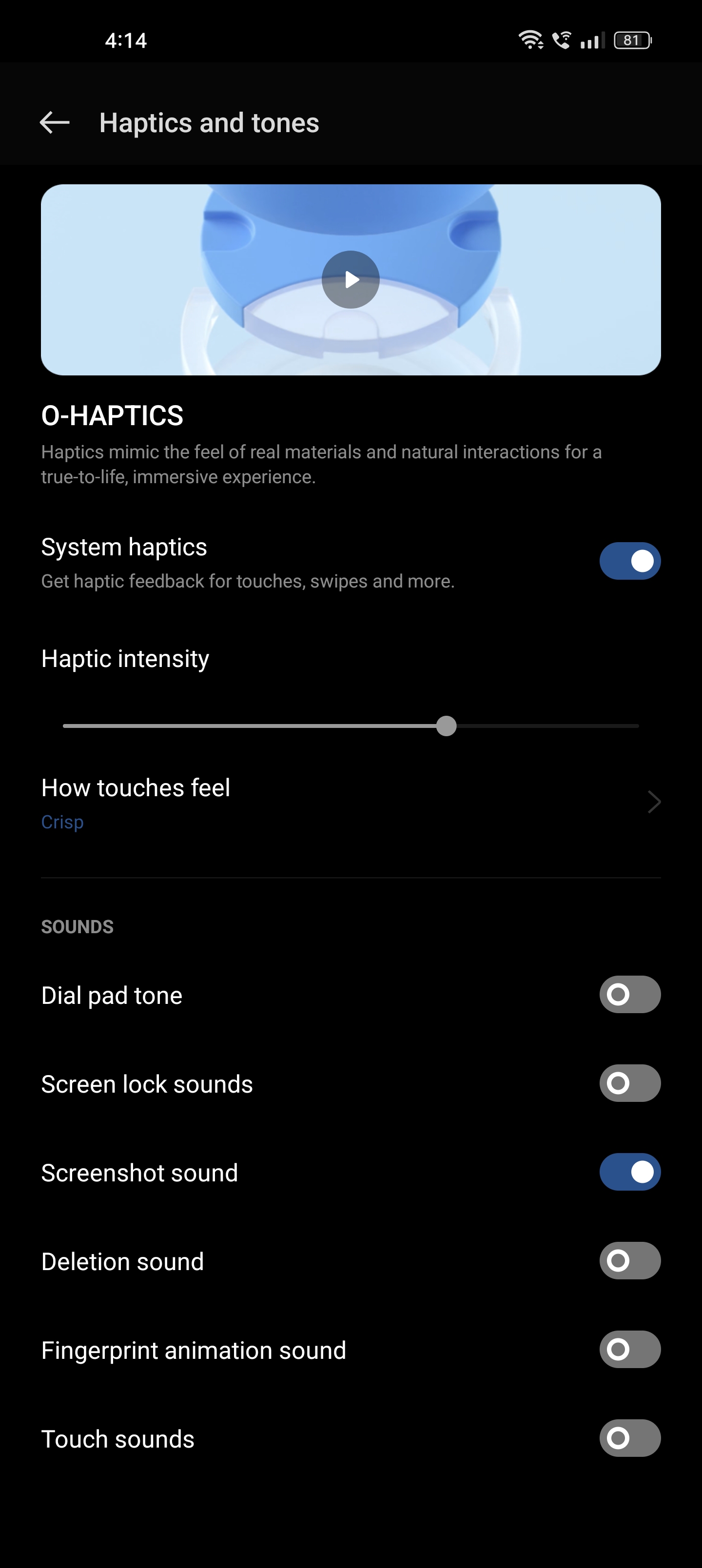
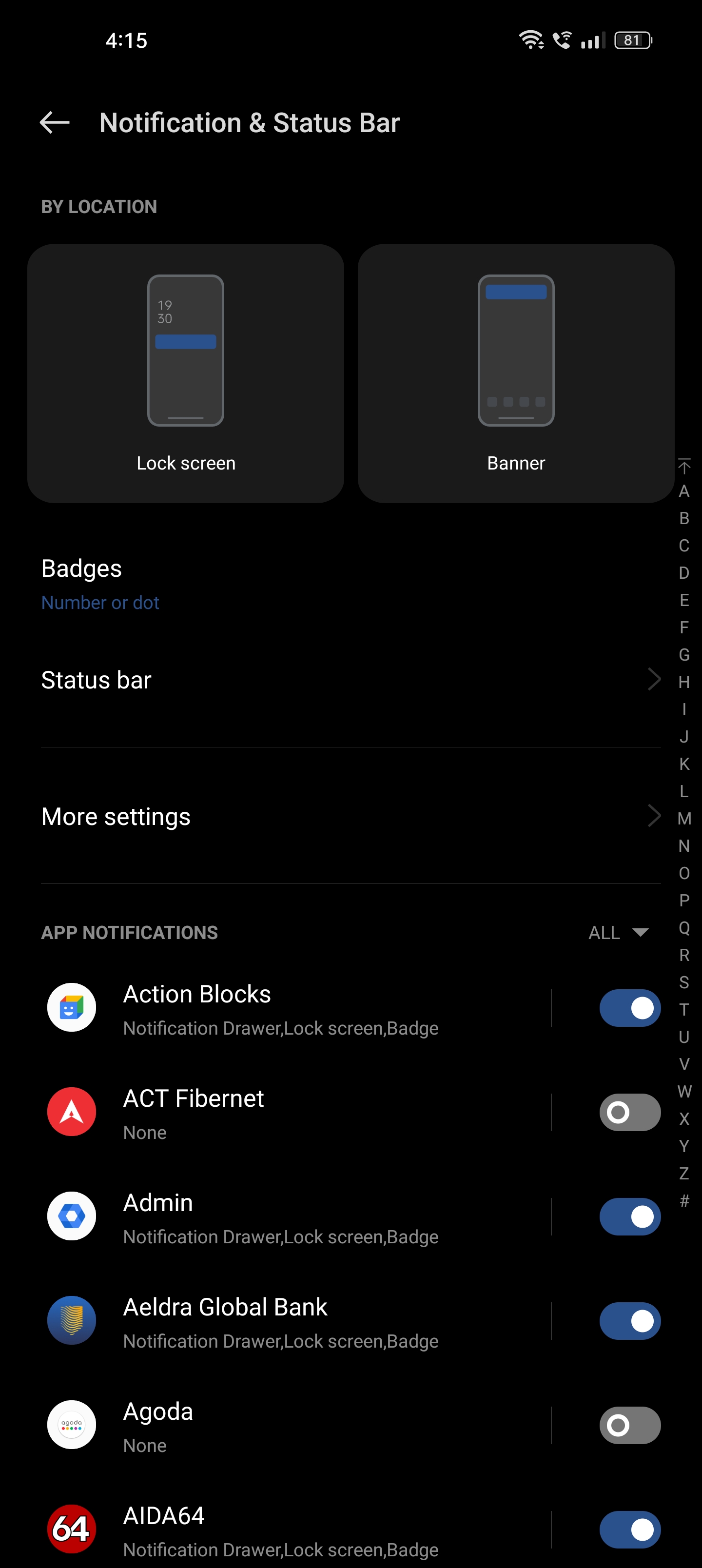

If you're a power user looking for a highly customizable interface, you'll find a lot to like in ColorOS 12. And with the bootloader now unlockable via a code, the Find X5 Pro is mod-friendly as well. The UI is well-optimized for the hardware as well, and I didn't see any issues on this front.
That said, the phone isn't without its shortcomings. There is a lot of bloatware out of the box, and while it can be uninstalled, it is more than what you'll find on Samsung and Xiaomi phones.
ColorOS 12.1 also has aggressive battery management, so much so that I couldn't get my email client (Newton Mail) to work reliably for the first two weeks. Even after disabling battery optimization and choosing auto-launch, I didn't get push notifications for incoming mail.
This isn't an isolated incident either, with Slack and Telegram also affected. I had similar issues with ColorOS in the past, and thankfully, a software update fixed this particular problem.
As for updates, the Find X5 Pro will get three guaranteed Android OS updates along with four years of monthly security patches. That's one year less than what Samsung is offering on its latest flagships, but it's still a good showing considering OPPO's history in this area.
OPPO Find X5 Pro: The competition
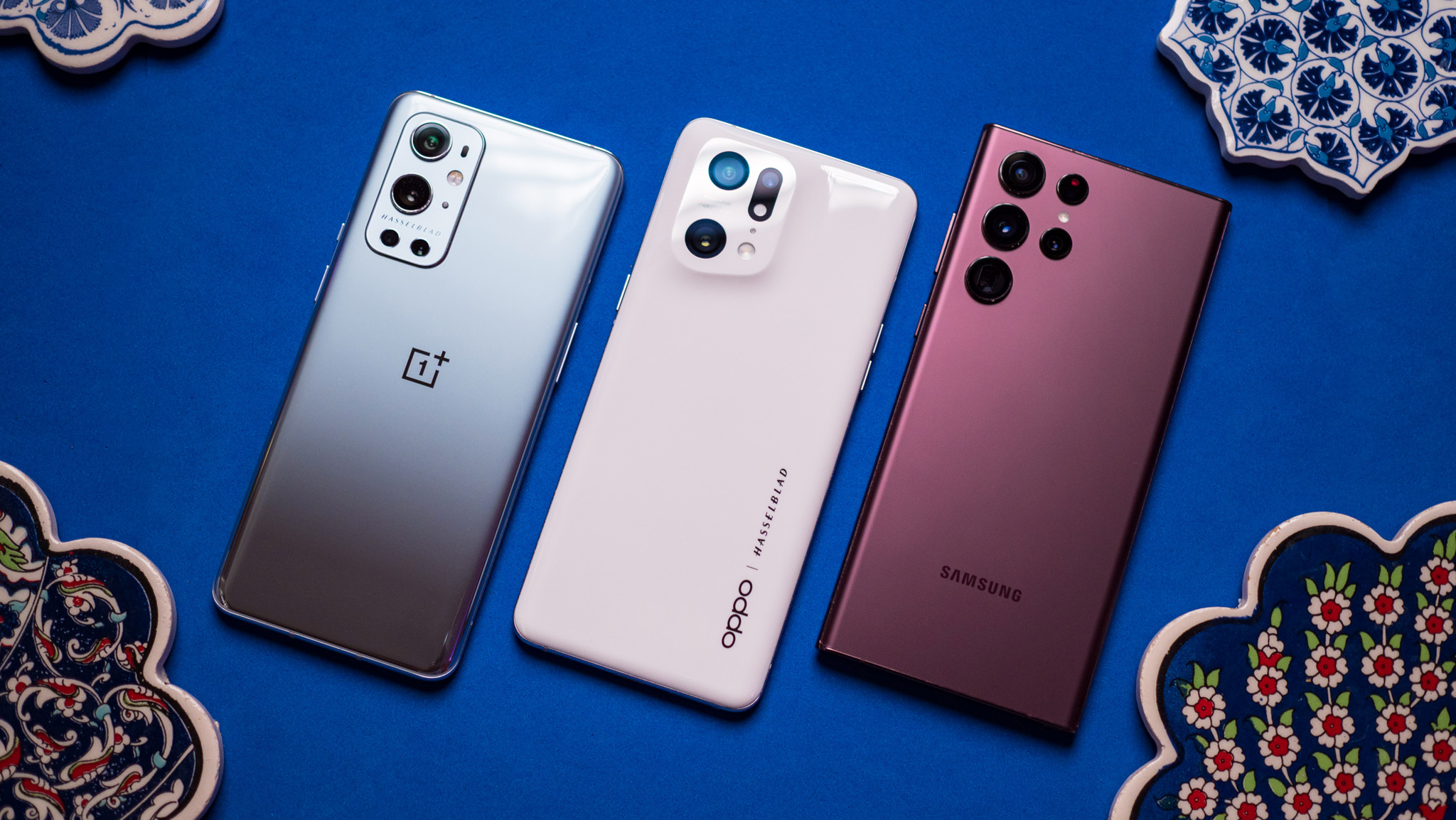
If you're looking for a flagship in 2022, the Galaxy S22+ is one of the best options currently available. The phone has a premium design, FHD+ 120Hz AMOLED screen, the same caliber of hardware as the Find X5 Pro, and it takes stunning photos.
It is lacking on the charging front — you're limited to 45W and 15W wirelessly — but it will get four guaranteed Android OS updates. And at £999 ($1,300) it is just that little bit more affordable than the Find X5 Pro.
The OnePlus 10 Pro is a reliable alternative as well, and it costs less than the Find X5 Pro while delivering a lot of the same hardware. The biggest issue is the inconsistent software and the poor cameras — both are not on the same level as the Find X5 Pro.
The Xiaomi 12 Pro is one of my favorite phones of the year. It has a sleek design, a strong camera array that takes great photos in any situation, and the same caliber of hardware as the Find X5 Pro. It's annoying that Xiaomi doesn't include water resistance as standard on its devices, but other than that omission, the 12 Pro is a decent alternative that costs a little less than the Find X5 Pro.
OPPO Find X5 Pro: Should you buy it?
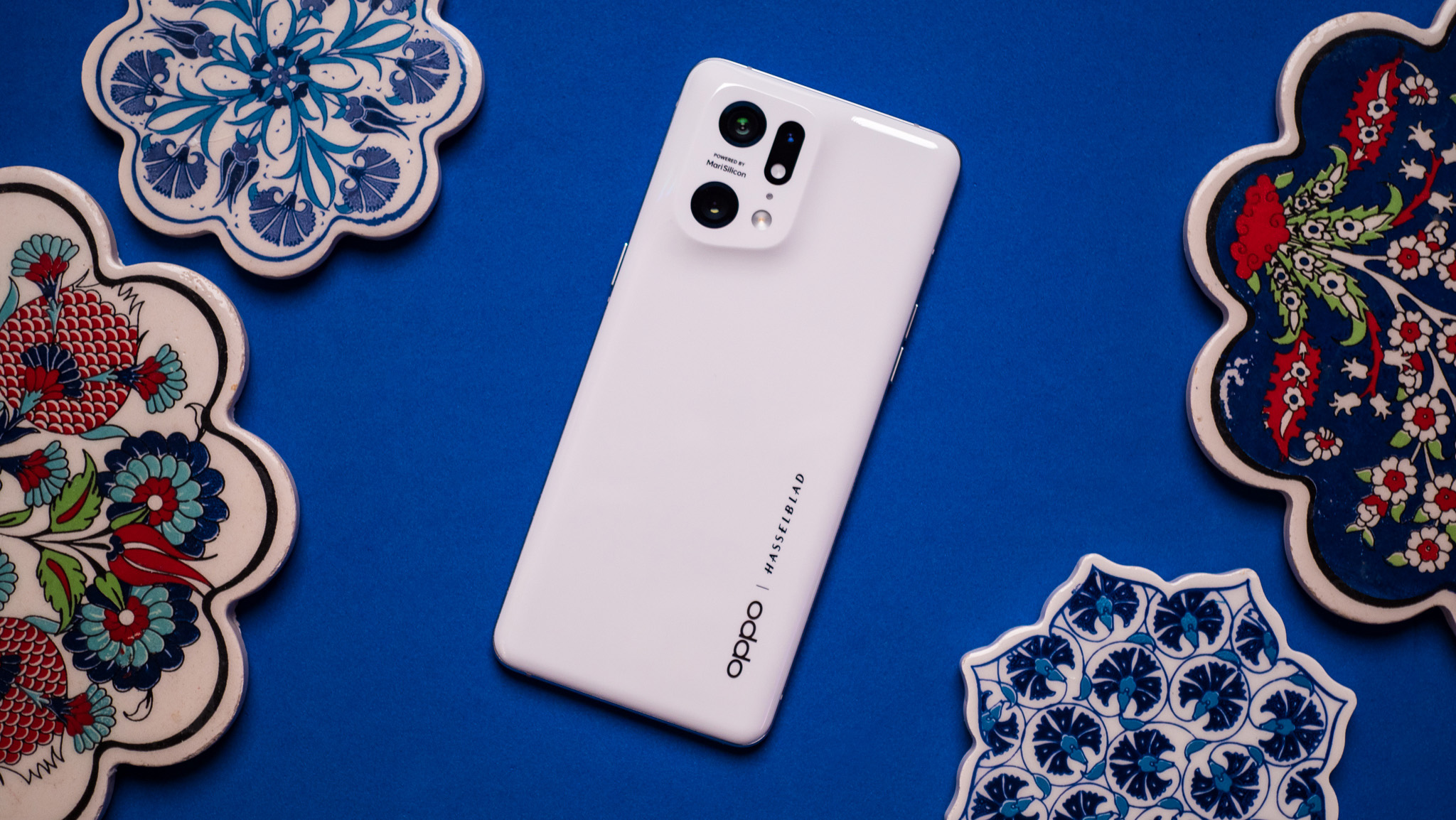
You should buy this if:
- You need a gorgeous phone with a ceramic chassis
- You're looking for the latest hardware with global 5G
- You need versatile cameras that take excellent low-light shots
- You want a phone that charges faster than the Galaxy S22+
You shouldn't buy this if:
- You need a telephoto lens that goes beyond 2x zoom
- You want four Android OS updates
- You want a flagship that costs less than the Galaxy S22+
I overhauled AC's best Android phones list recently, adding the Galaxy S22+ as the best all-round choice. The S22 Ultra gives you a better camera and is my favorite phone of the year, but as an overall option, the S22+ is ideally positioned for most users. With the Find X5 Pro, you're getting a phone that holds its own against the Galaxy S22+ and comes out ahead in a few areas.
The 120Hz AMOLED screen is absolutely stunning, the cameras take outstanding photos in low-light, the software is clean, modern, and gives you a lot of customizability. You also get 80W wired and 50W wireless charging with better battery longevity. And of course, there's that design to consider; I'm not exaggerating when I say that this is my favorite phone design in 2022.
OPPO did a good job addressing software gremlins that were present out of the box, and the result is that the Find X5 Pro is devoid of any issues right now — at least on the software front.
All things considered, the Find X5 Pro is a fantastic overall choice if you want a flagship in 2022. The one downside is the cost; at £1,049, it is £50 more than the equivalent Galaxy S22+ variant. You get a lot for your money, but there's no denying the Find X5 Pro would have been just that little bit more enticing if it undercut Samsung's offering.
If you live in North America and want the Find X5 Pro, you should just get the OnePlus 10 Pro; that particular device is a rebranded Find X5 Pro with a slightly different design, and it costs a lot less.
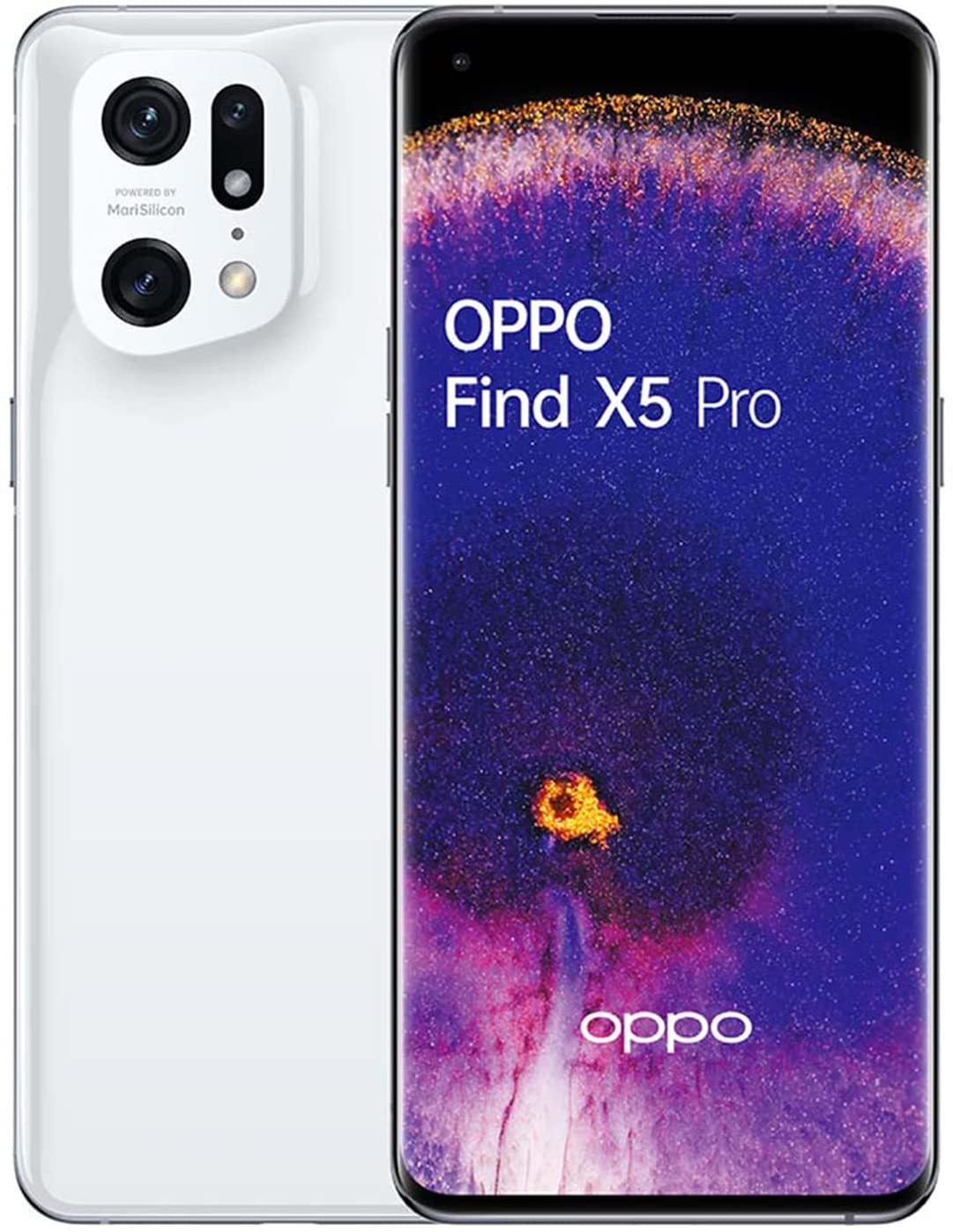
The Find X5 Pro is one of the best phones currently available, combining a gorgeous design with the latest internal hardware, 80W wired and 50W wireless charging, and fabulous cameras.

Harish Jonnalagadda is Android Central's Senior Editor overseeing mobile coverage. In his current role, he leads the site's coverage of Chinese phone brands, networking products, and AV gear. He has been testing phones for over a decade, and has extensive experience in mobile hardware and the global semiconductor industry. Contact him on Twitter at @chunkynerd.
